Developed as a replacement for the iconic SLS AMG, the Mercedes-AMG GT has been around since 2014 and has already made a name for itself on the sports car market. Already available in a variety of versions and body styles, the AMG GT also made its debut on the race track, being offered in both GT3 and GT4 specifications. Starting in 2015, it also became the official Safety Car of the Formula One championship, being used in AMG GT S guise for three seasons. Come 2018, and the FIA upgraded its safety vehicle to AMG GT R specs, thus employing the range-topping model to lead the pack.
The 11th Mercedes-Benz vehicle to pace Formula One since 1996, the AMG GT R is also the most powerful safety car in Formula One history. The AMG GT R takes over from the AMG GT S, which was used since 2015, and joins a long list of AMG vehicles that were used over the last 23 years, including the SLS AMG, SL63 AMG, SLK55 AMG, CL55 AMG, and the C63 AMG. The AMG GT R Safety Car made its debut at the Australian Grand Prix on March 25 and will be used throughout the 2018 season, which ends on November 25.
Continue reading to learn more about the Mercedes-AMG GT R Formula 1 Safety Car.
2018 Mercedes-AMG GT R Formula 1 Safety Car
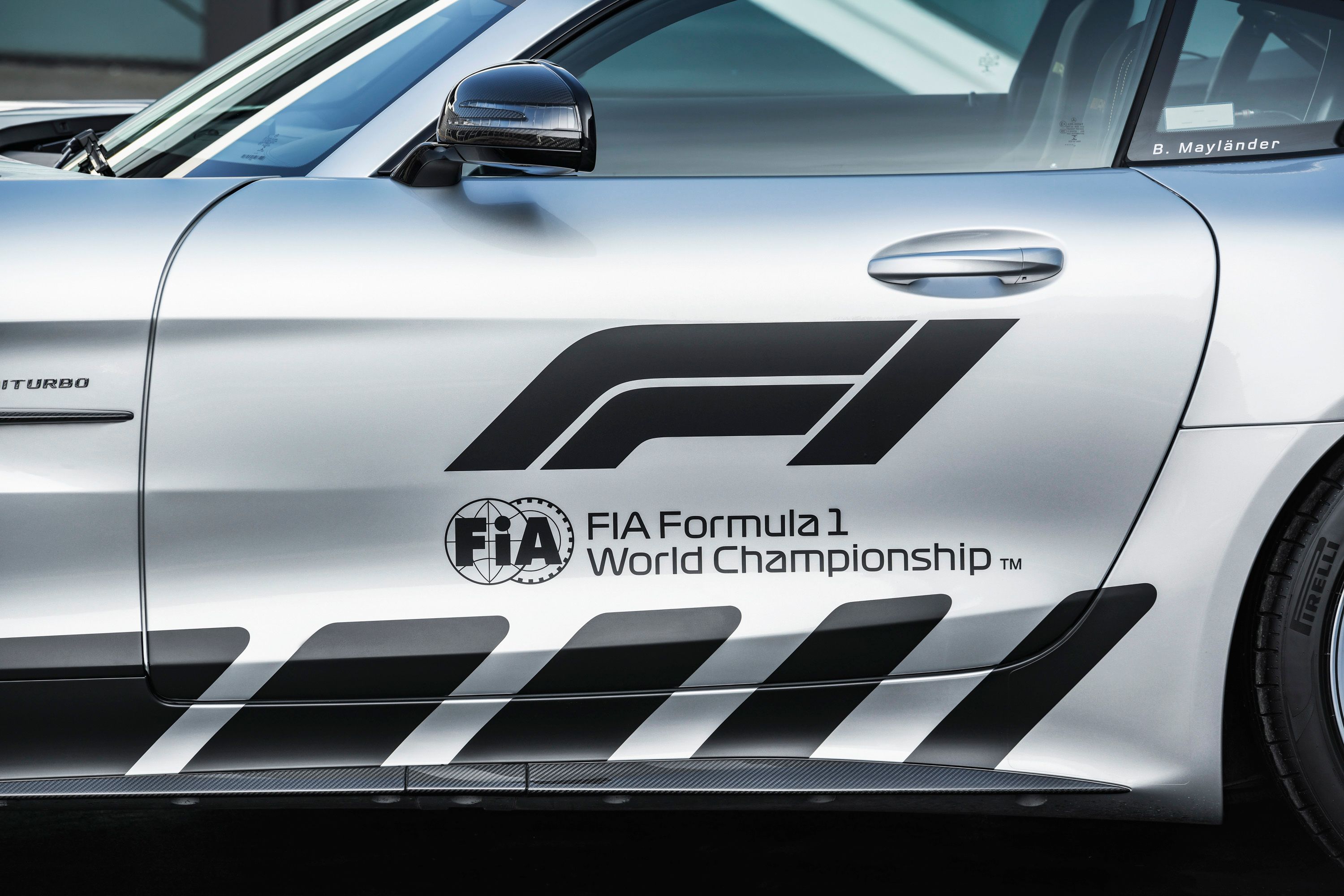

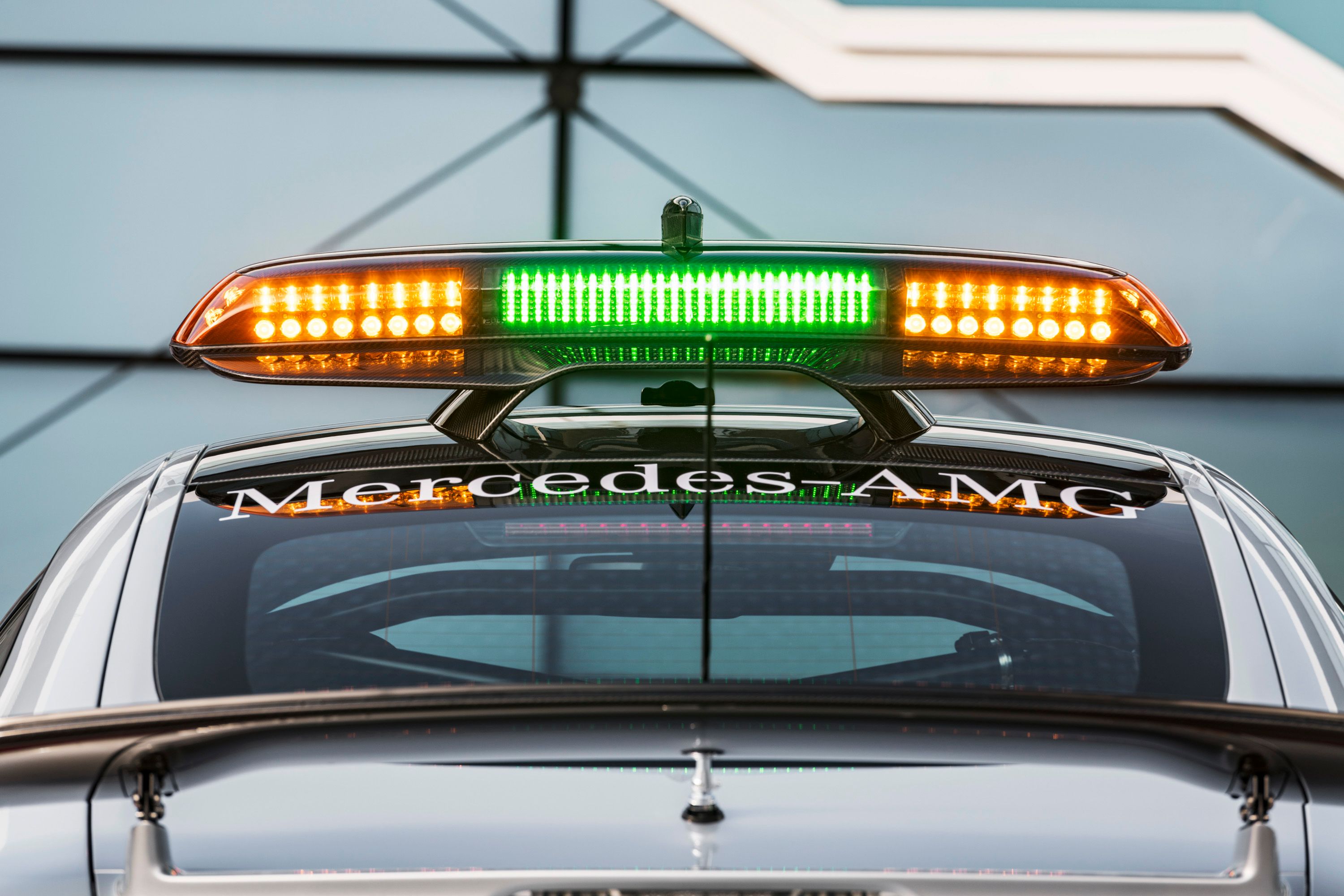
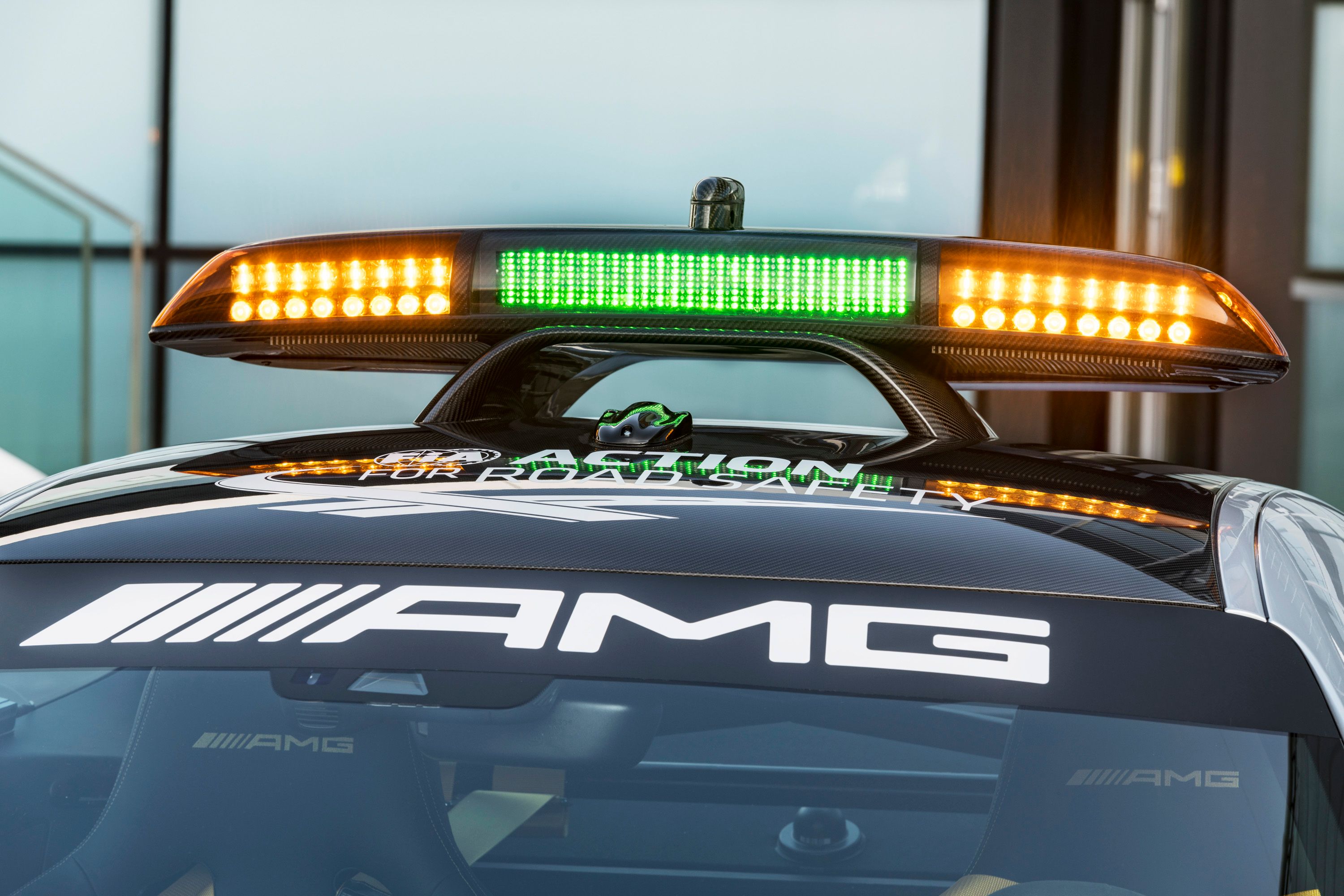
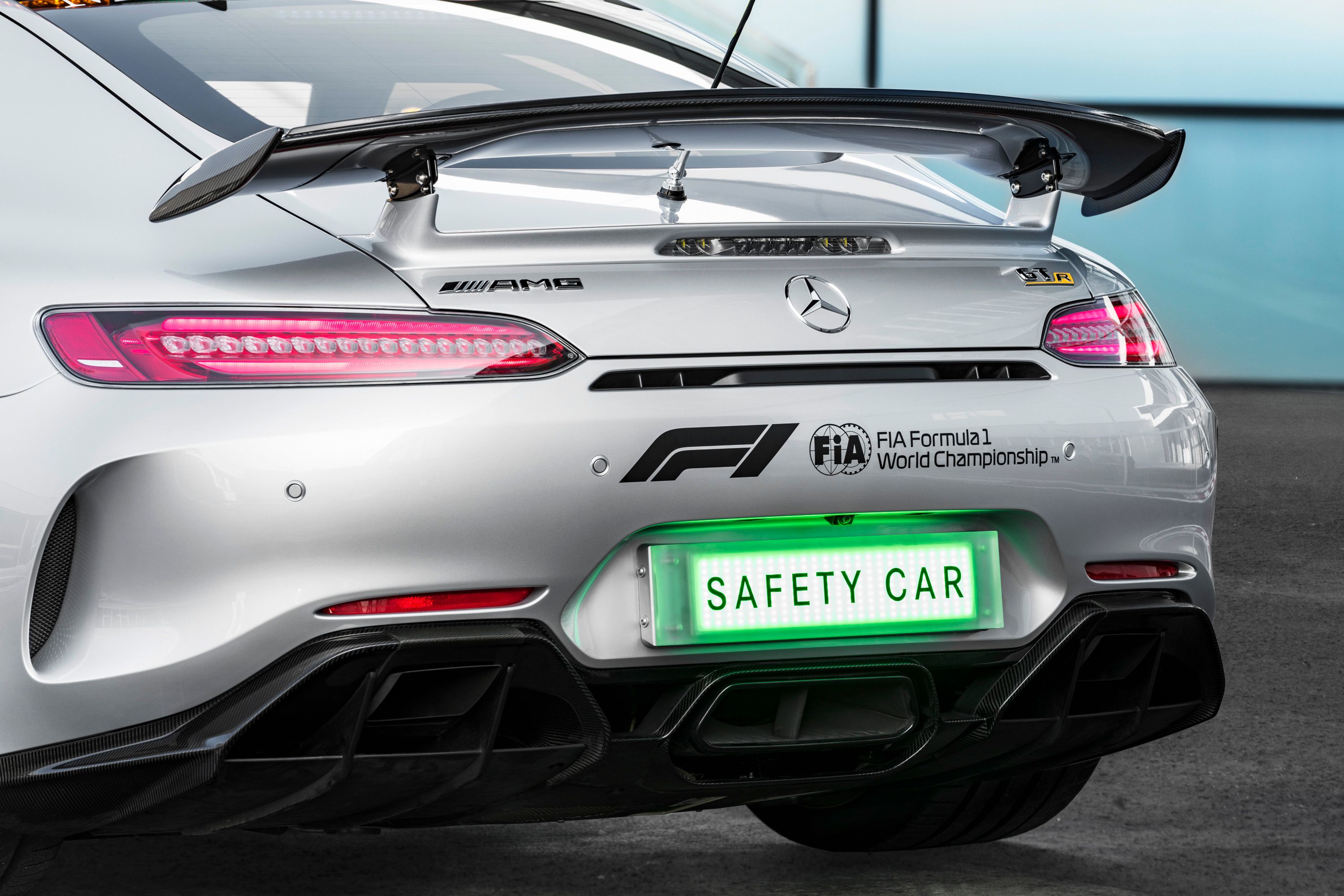
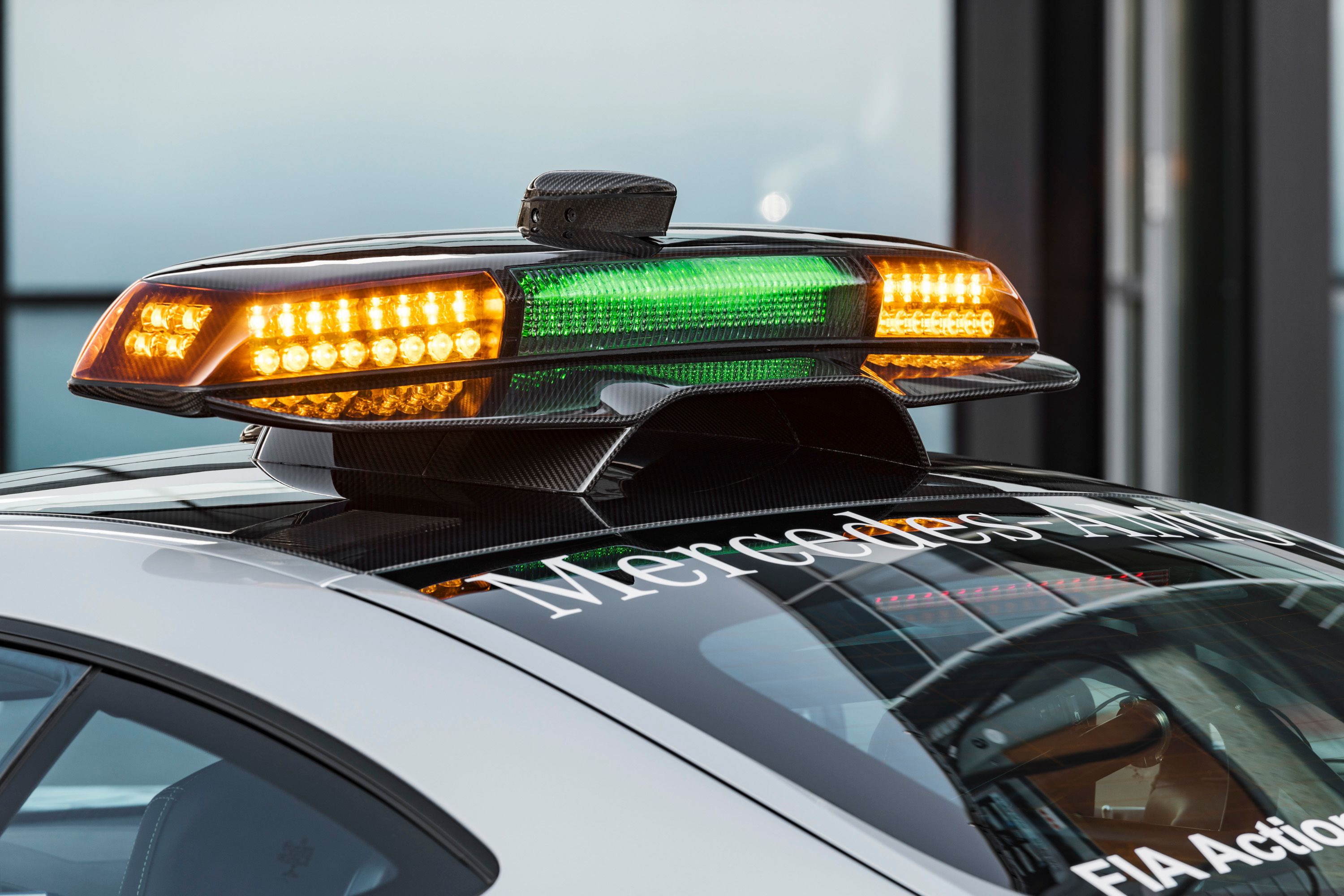
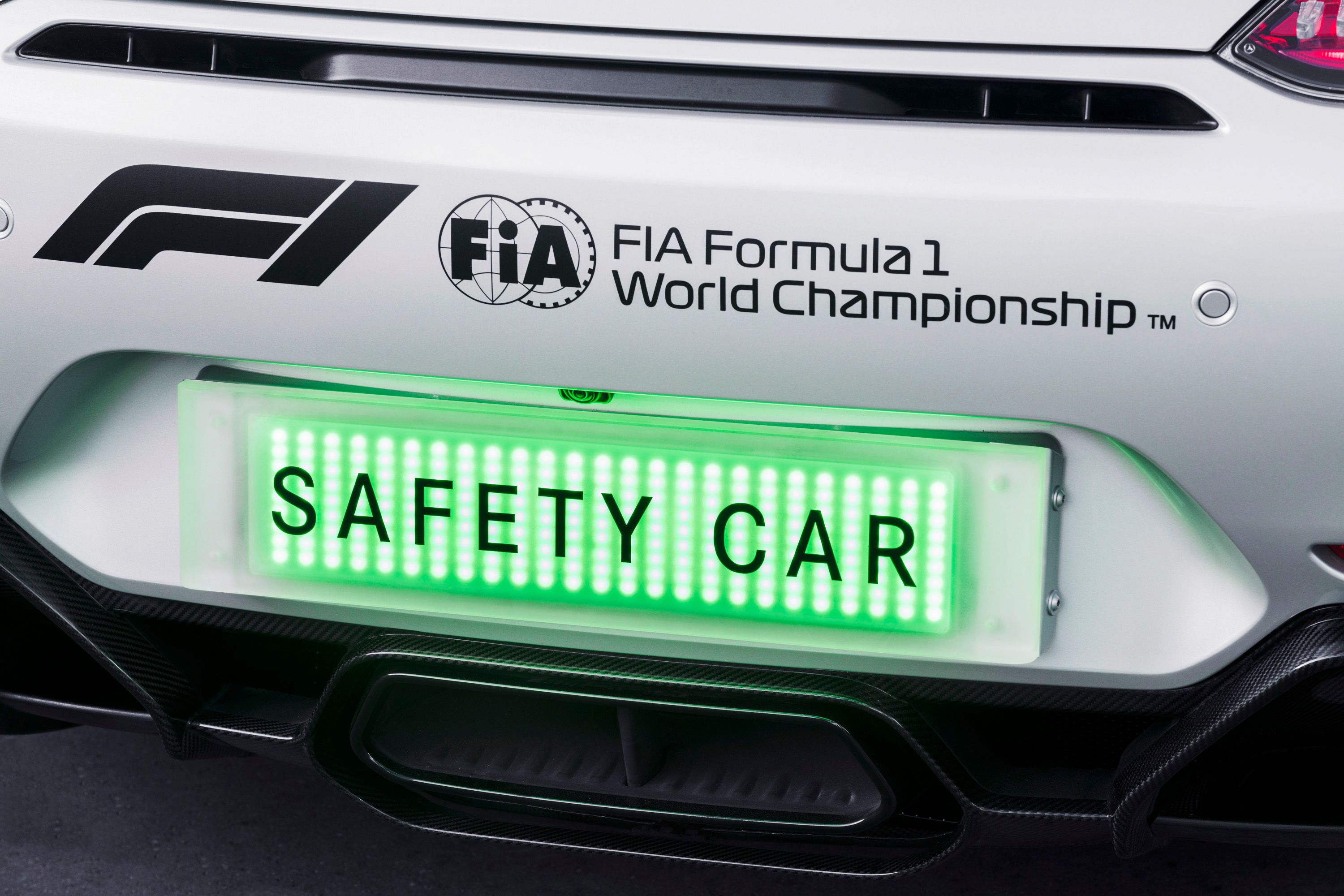
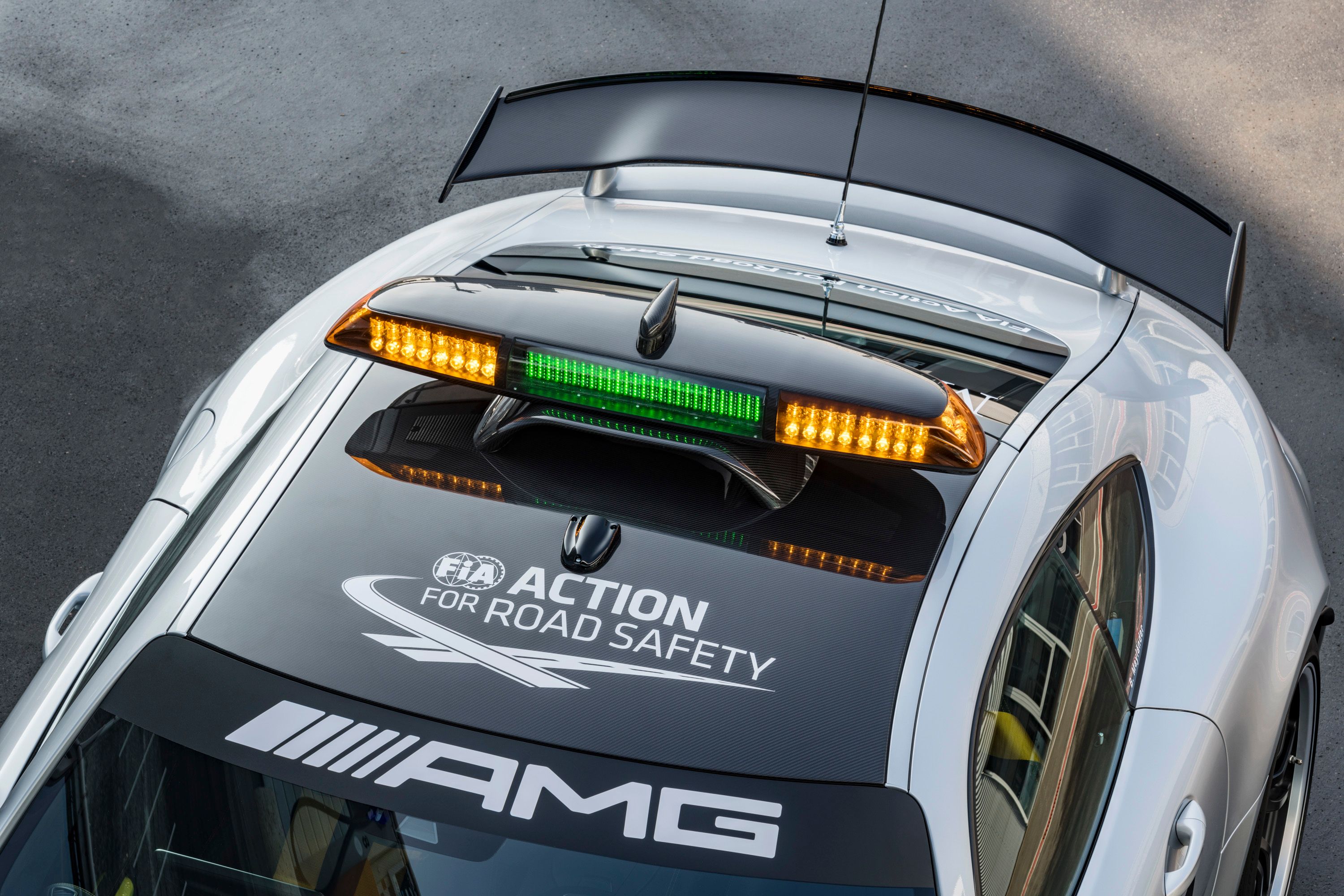
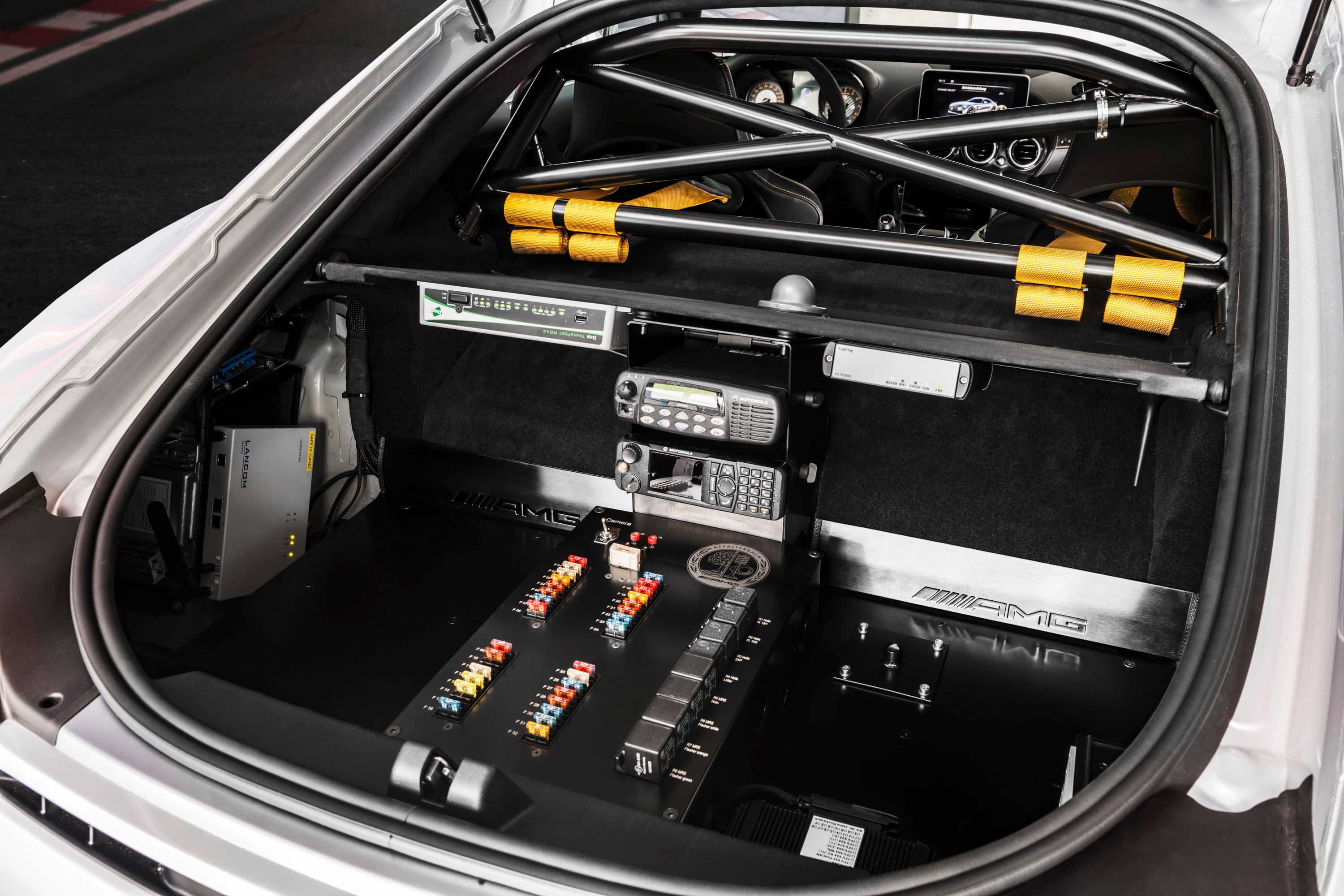
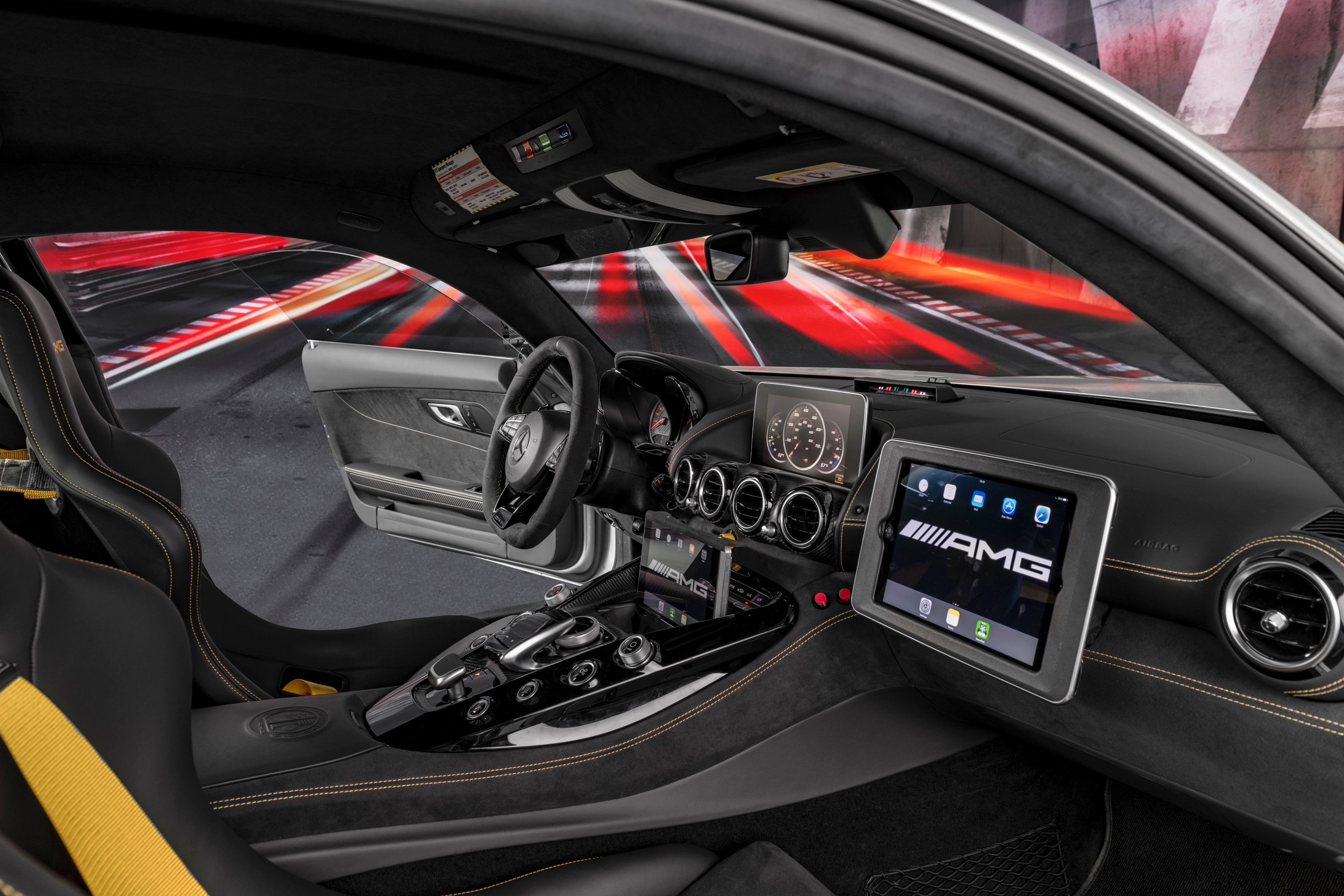
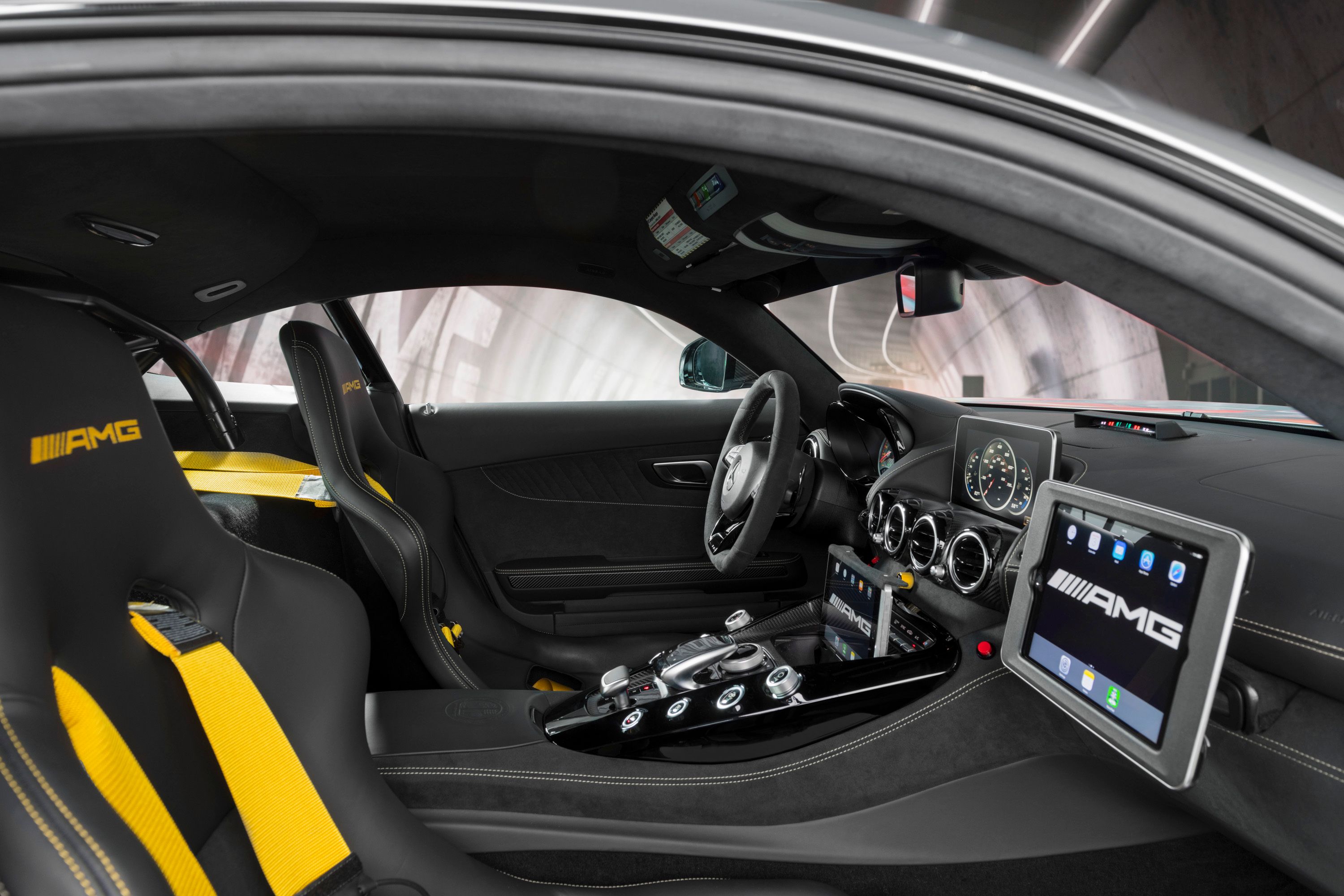
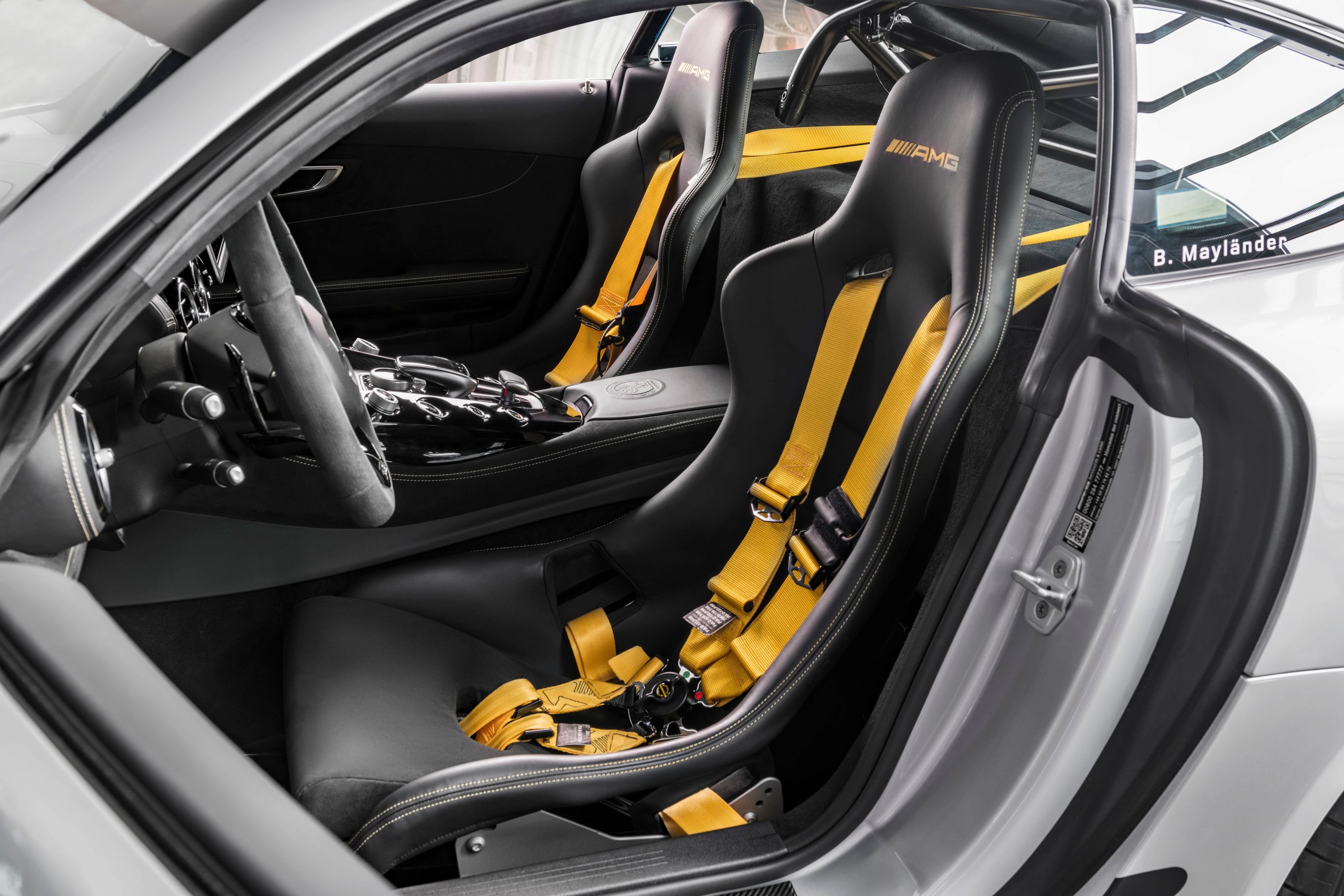
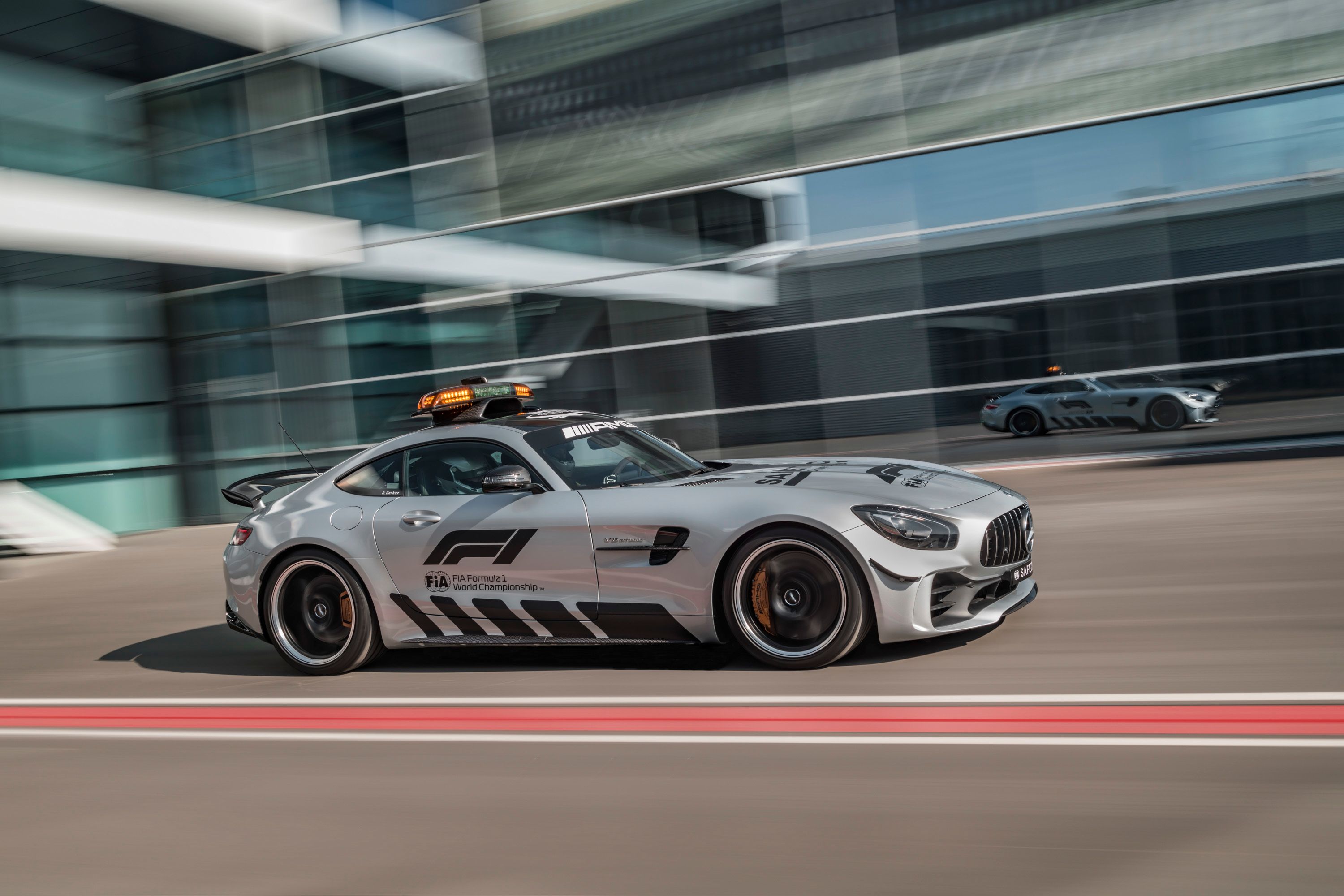
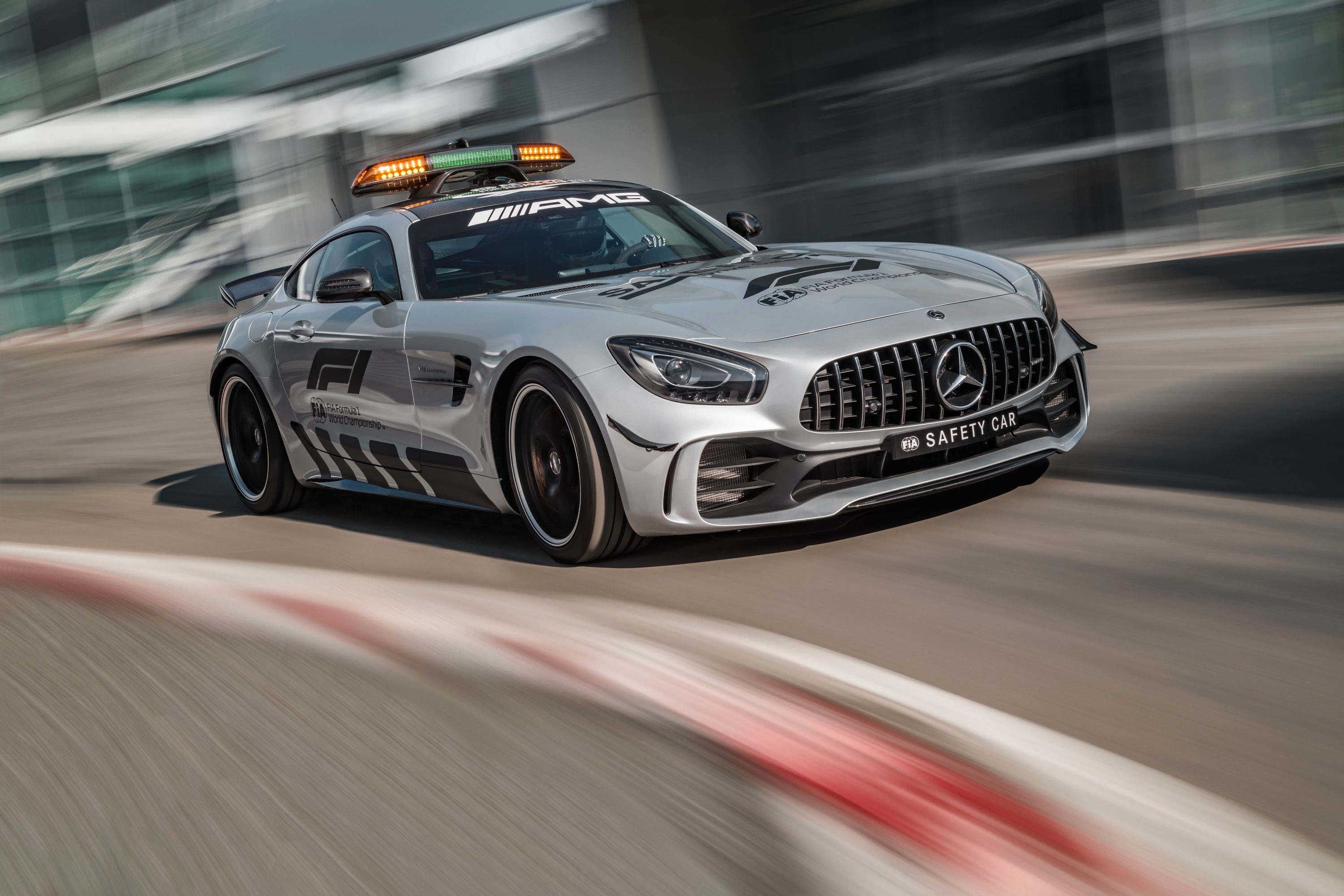
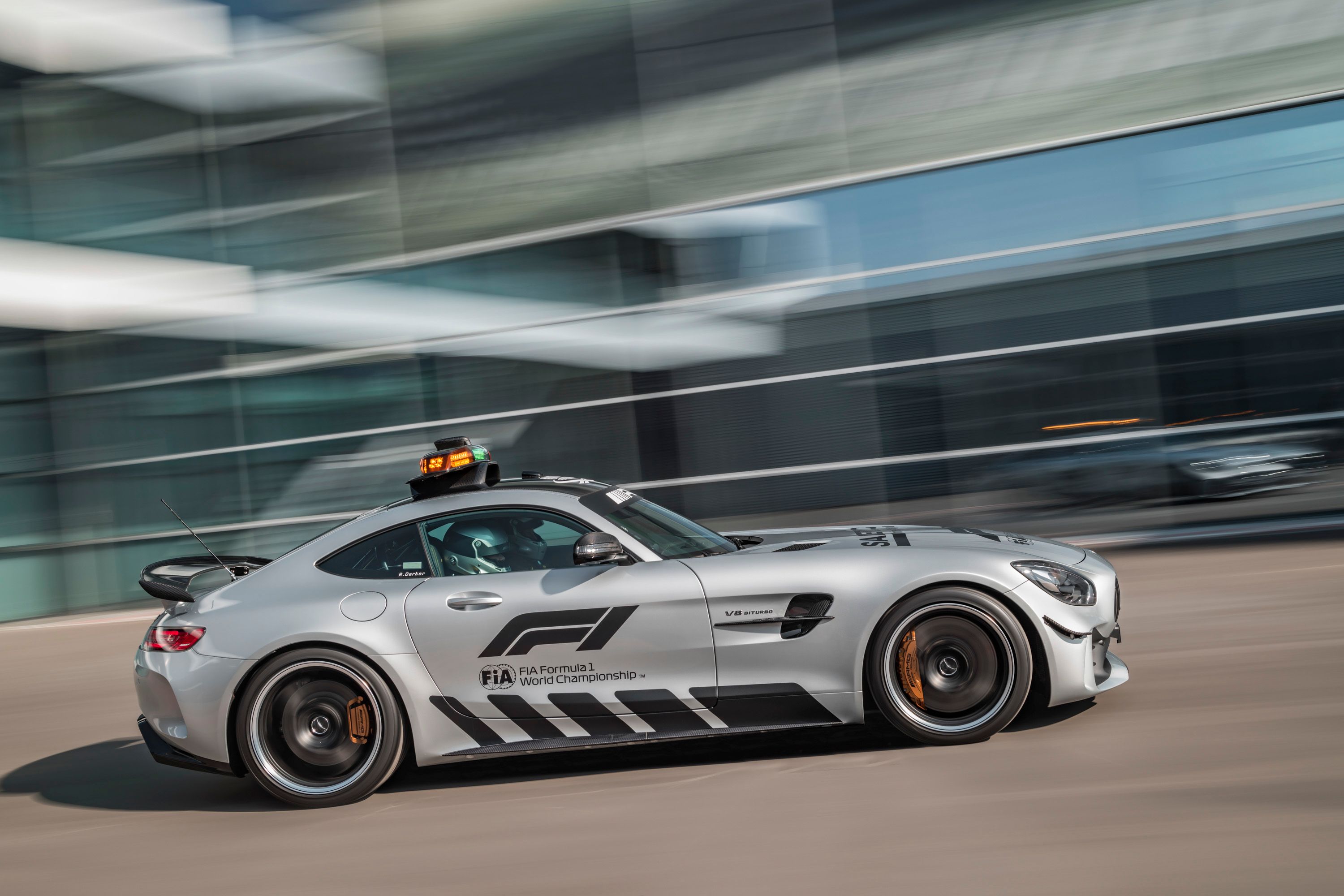
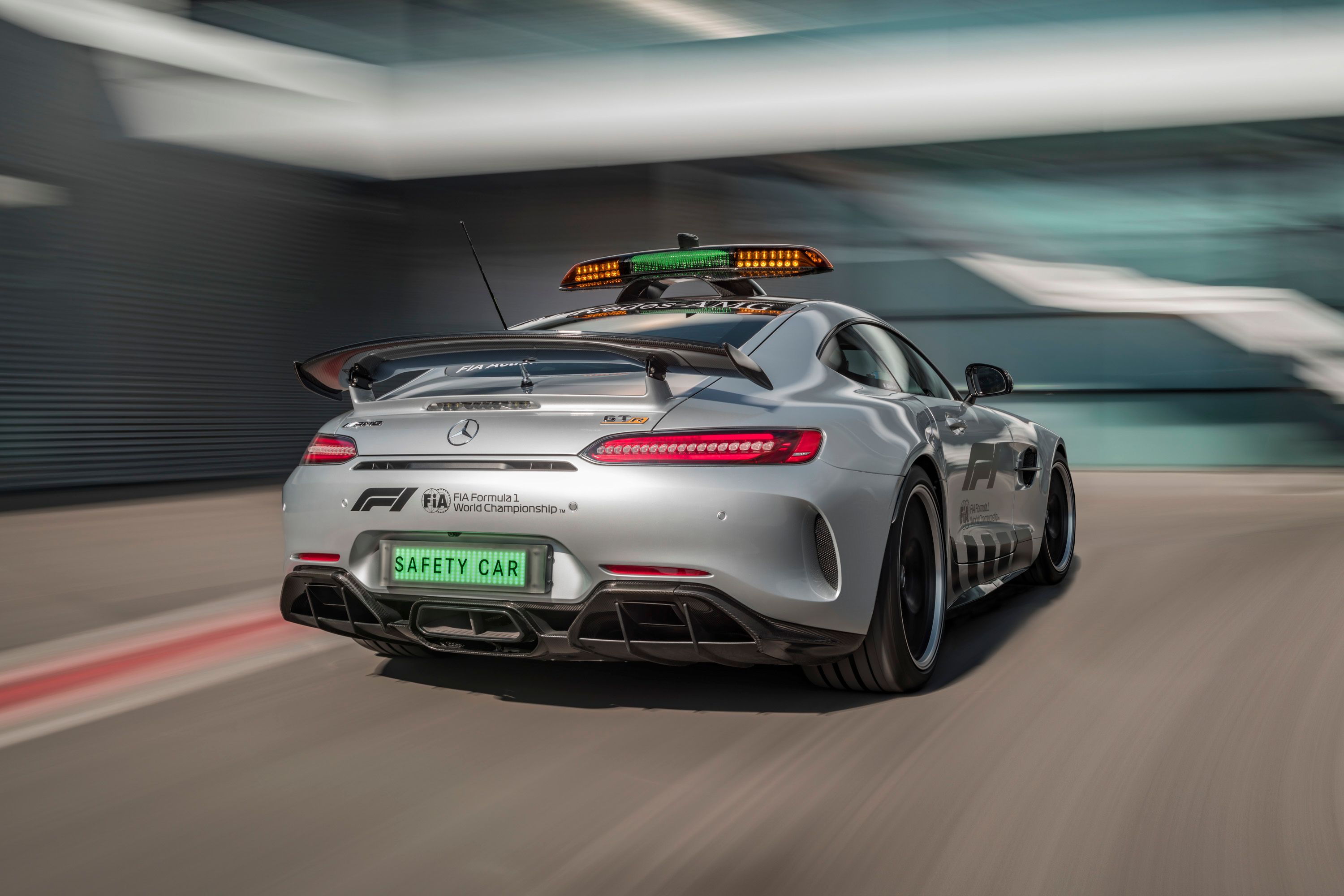
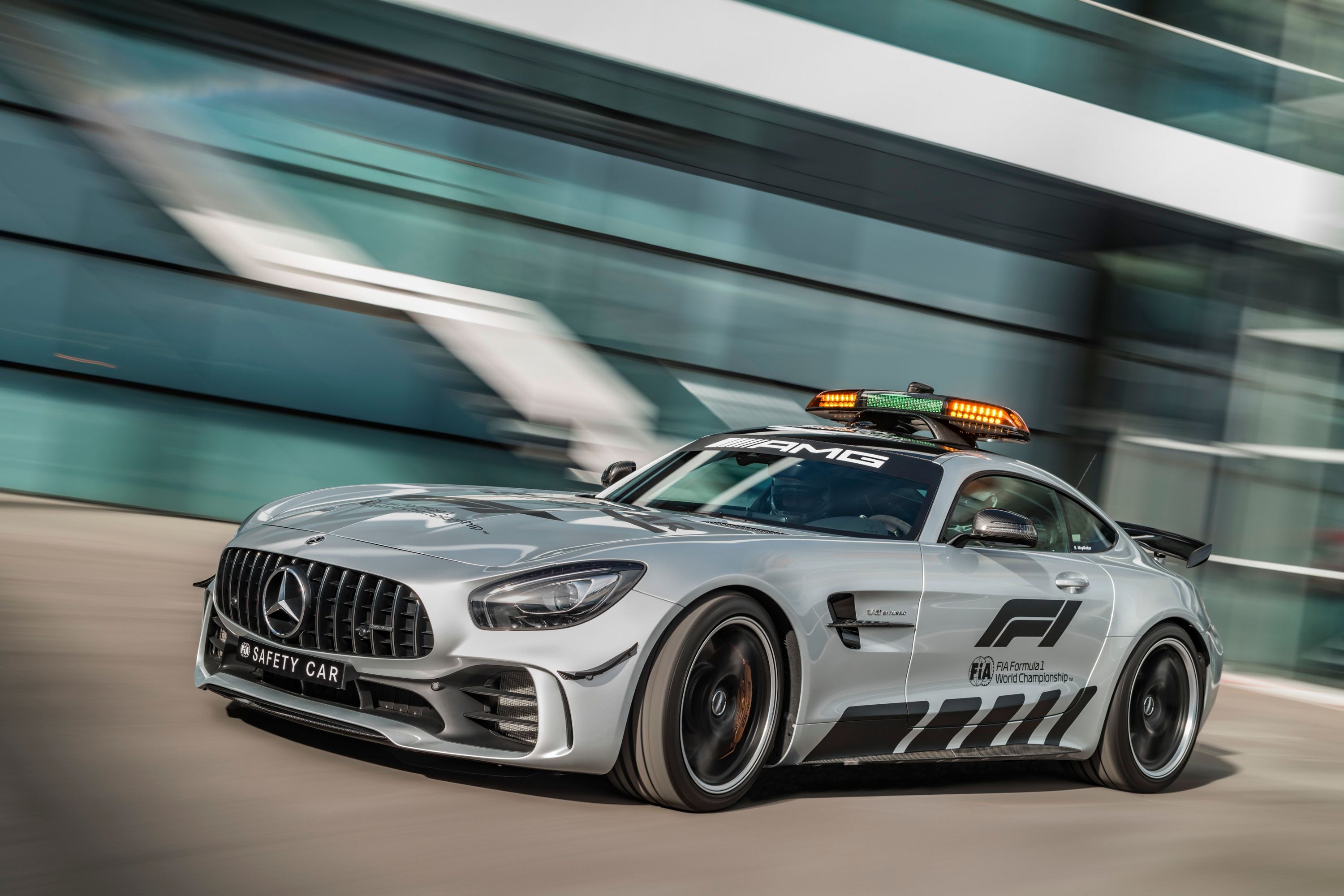
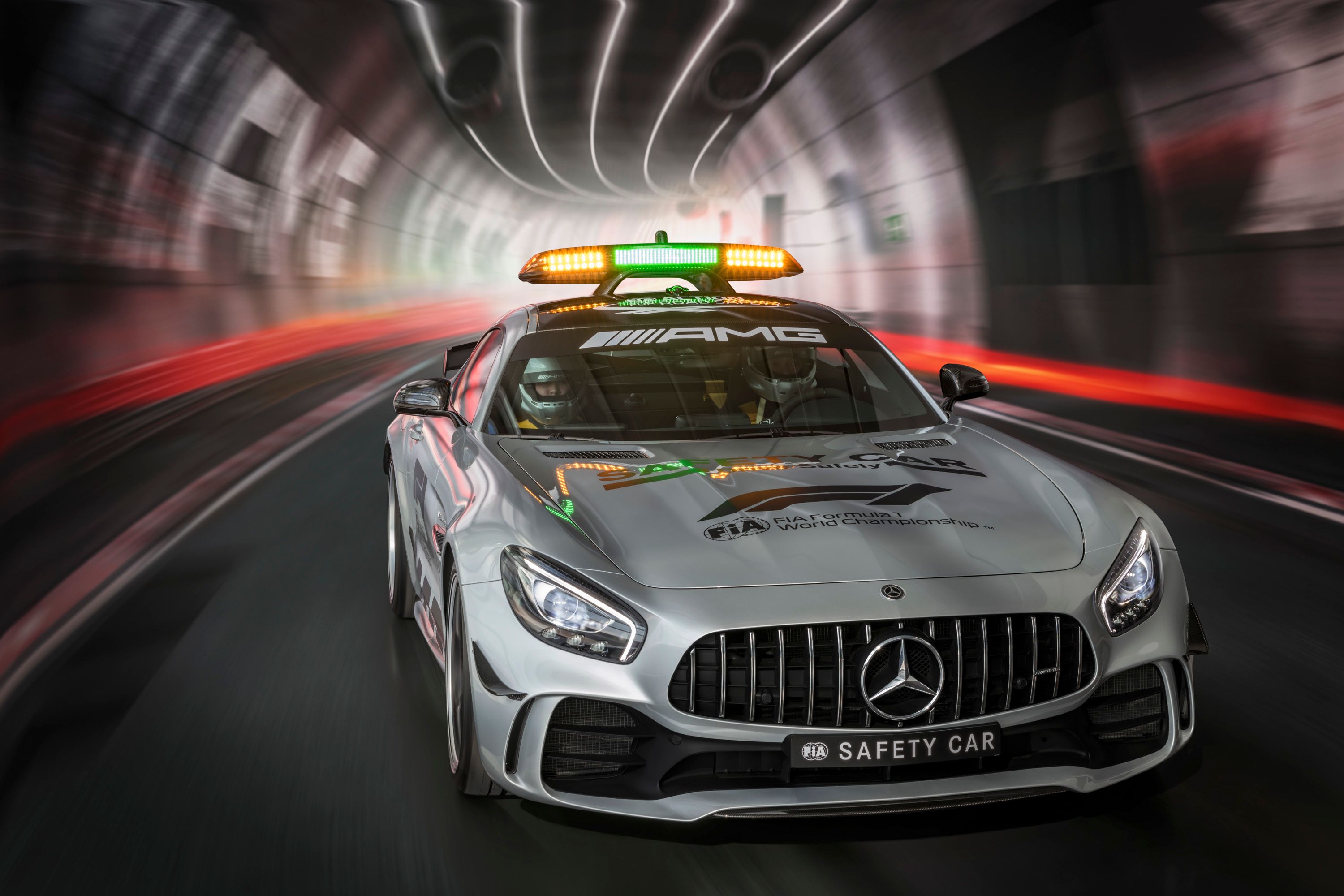
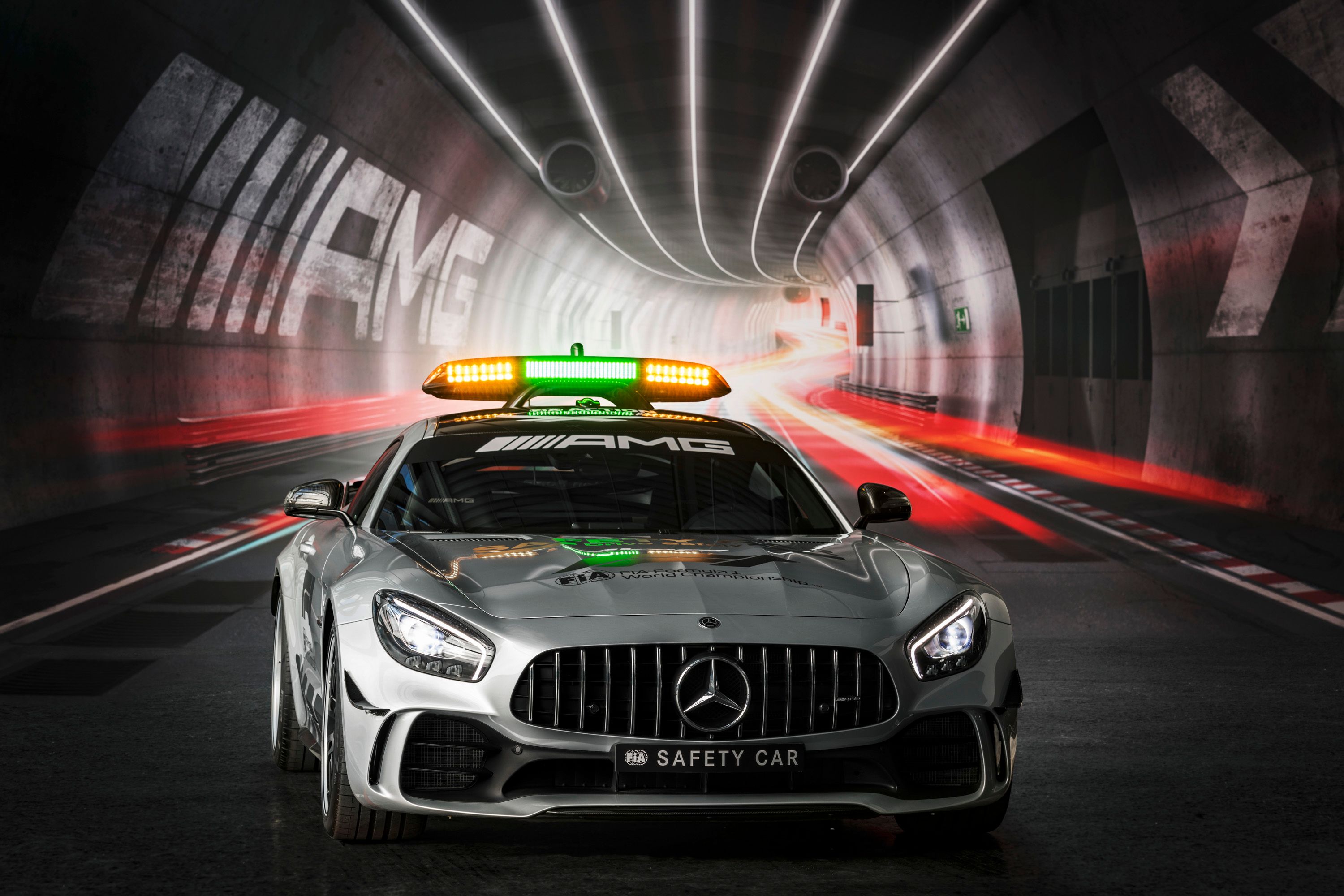
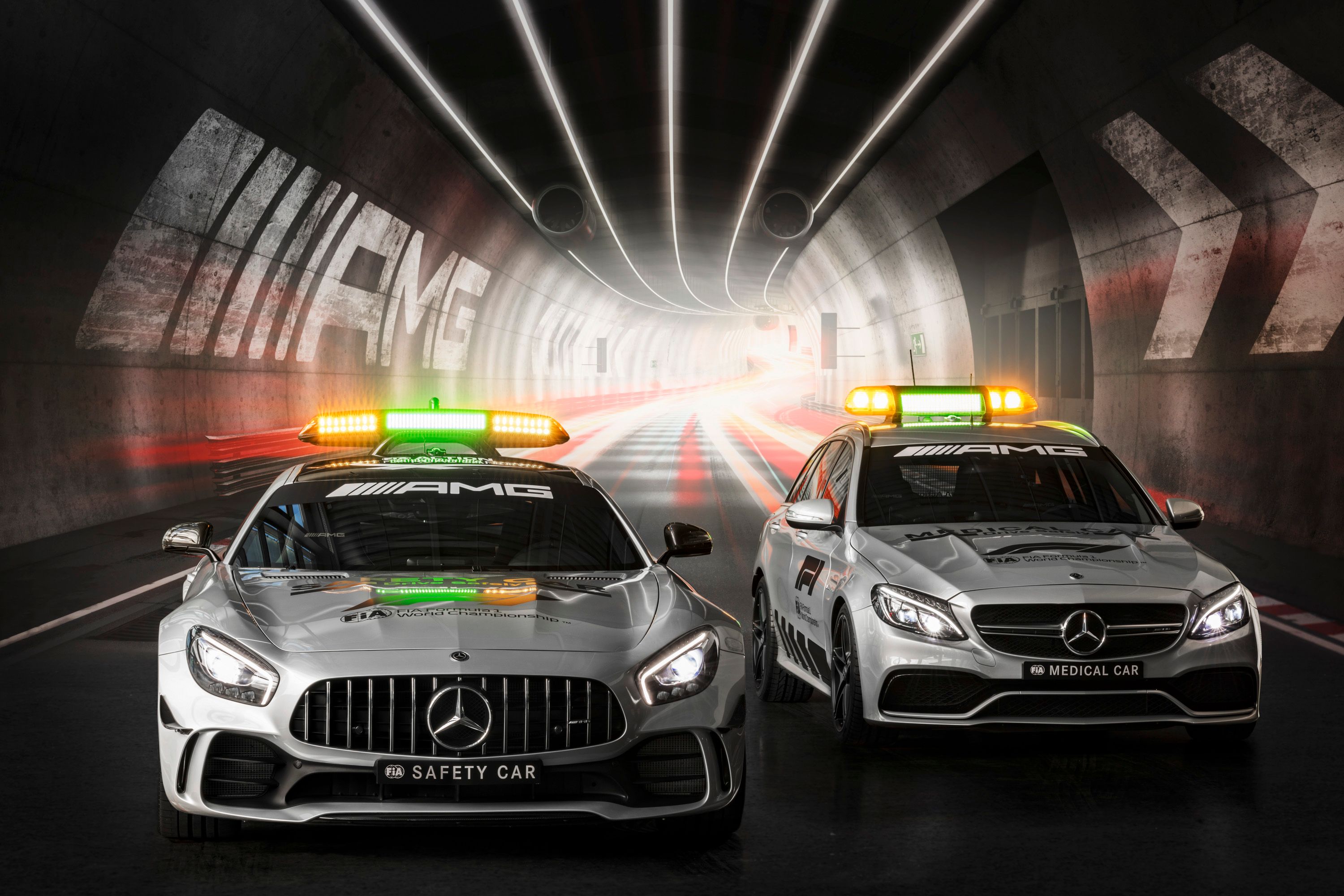
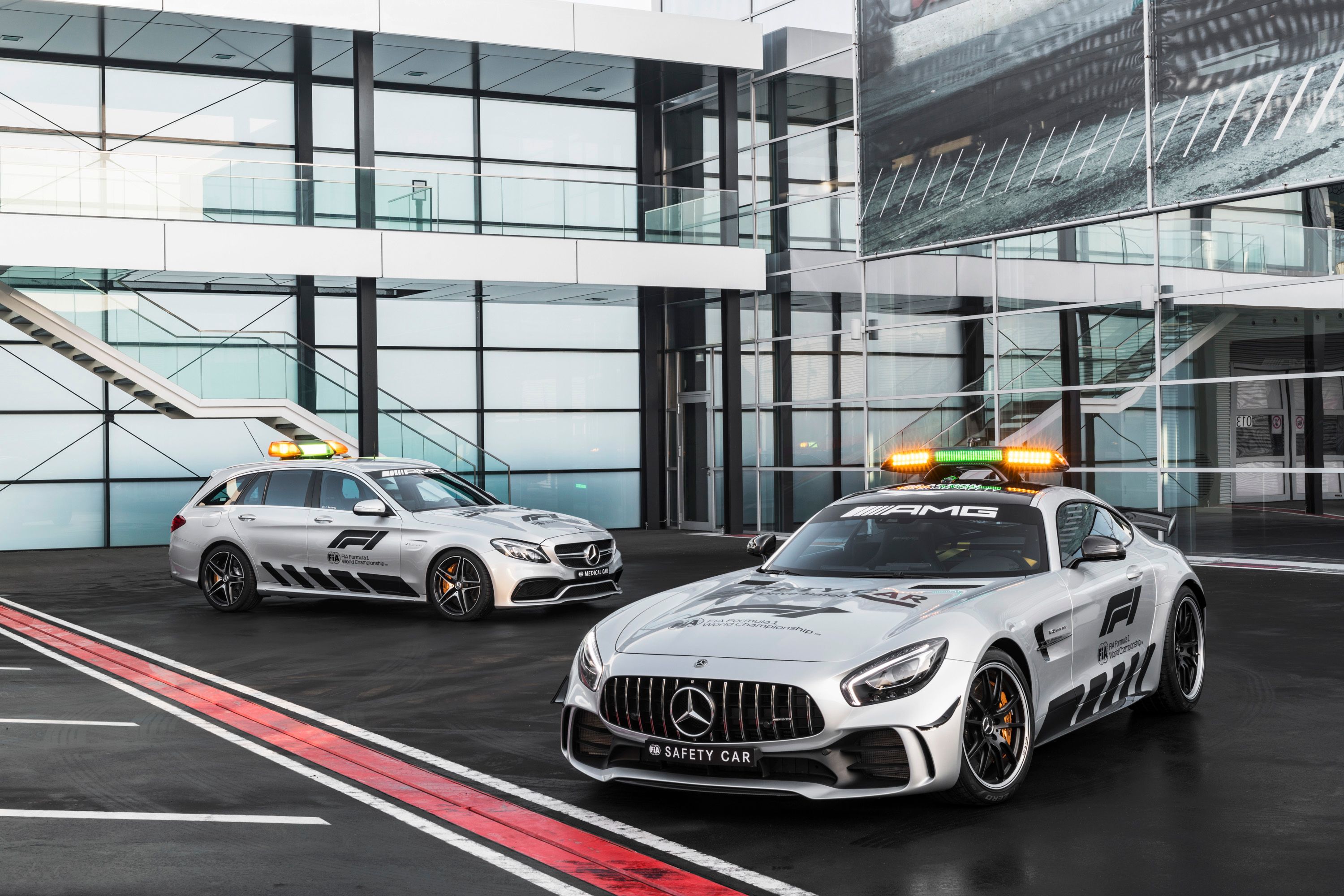
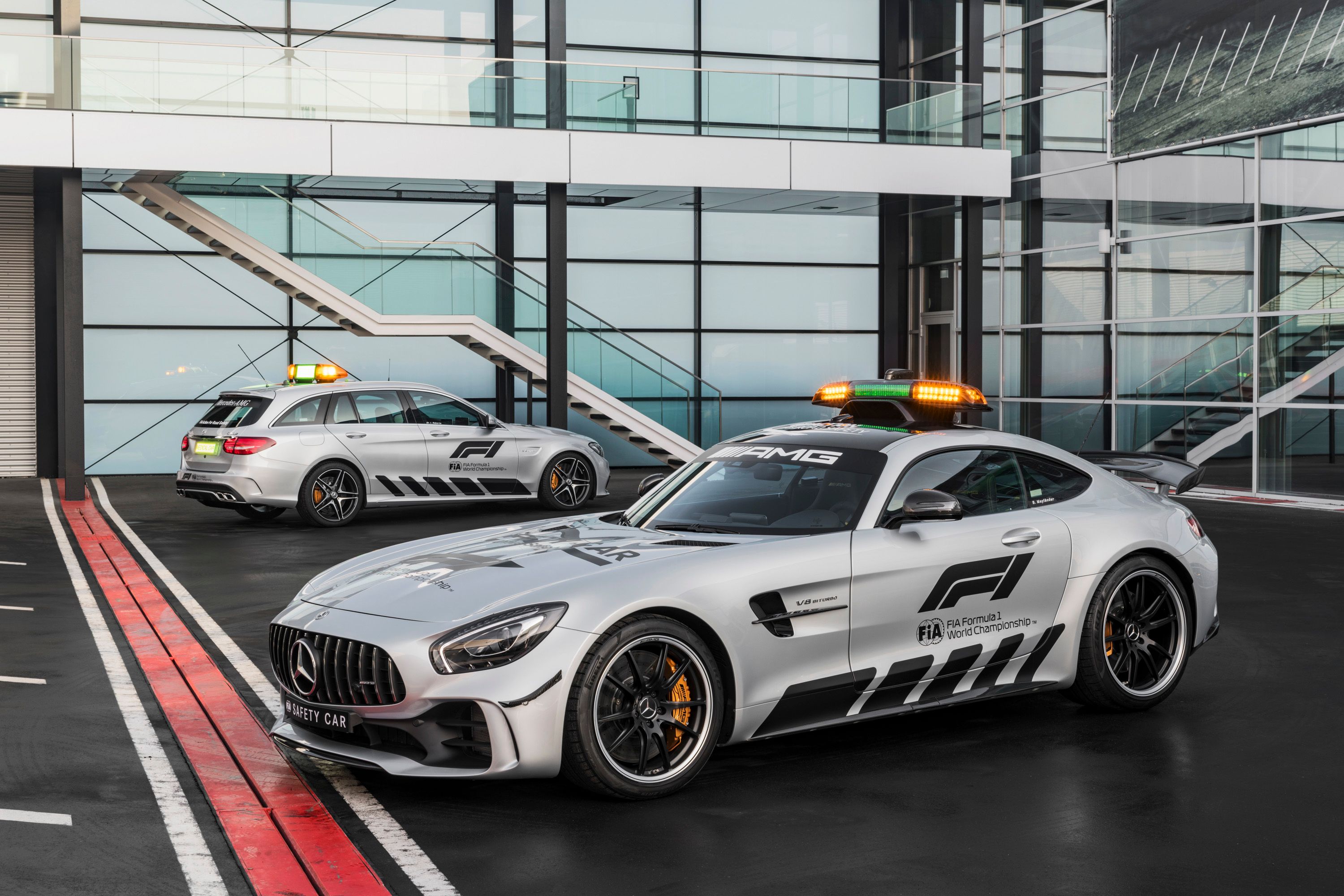

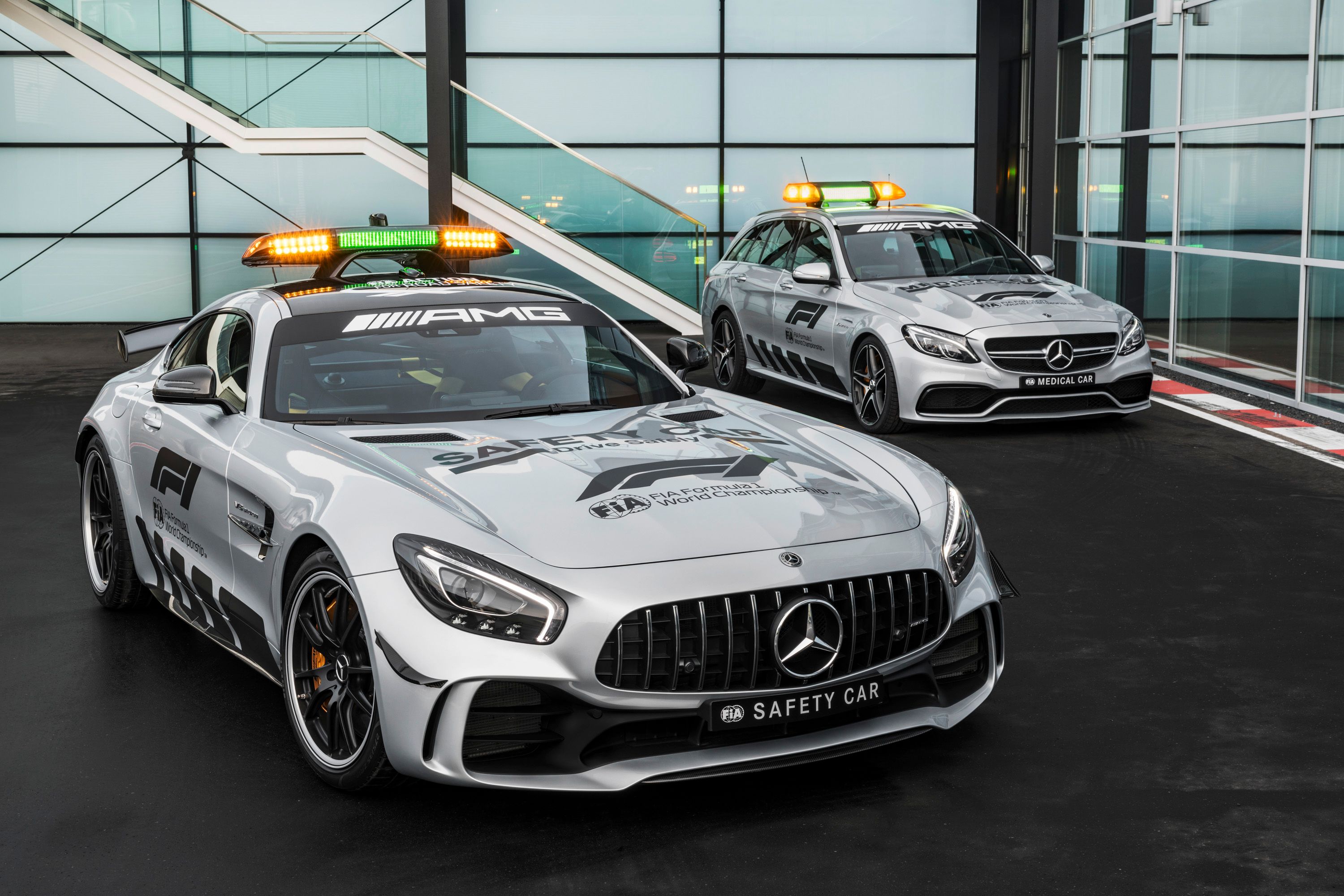
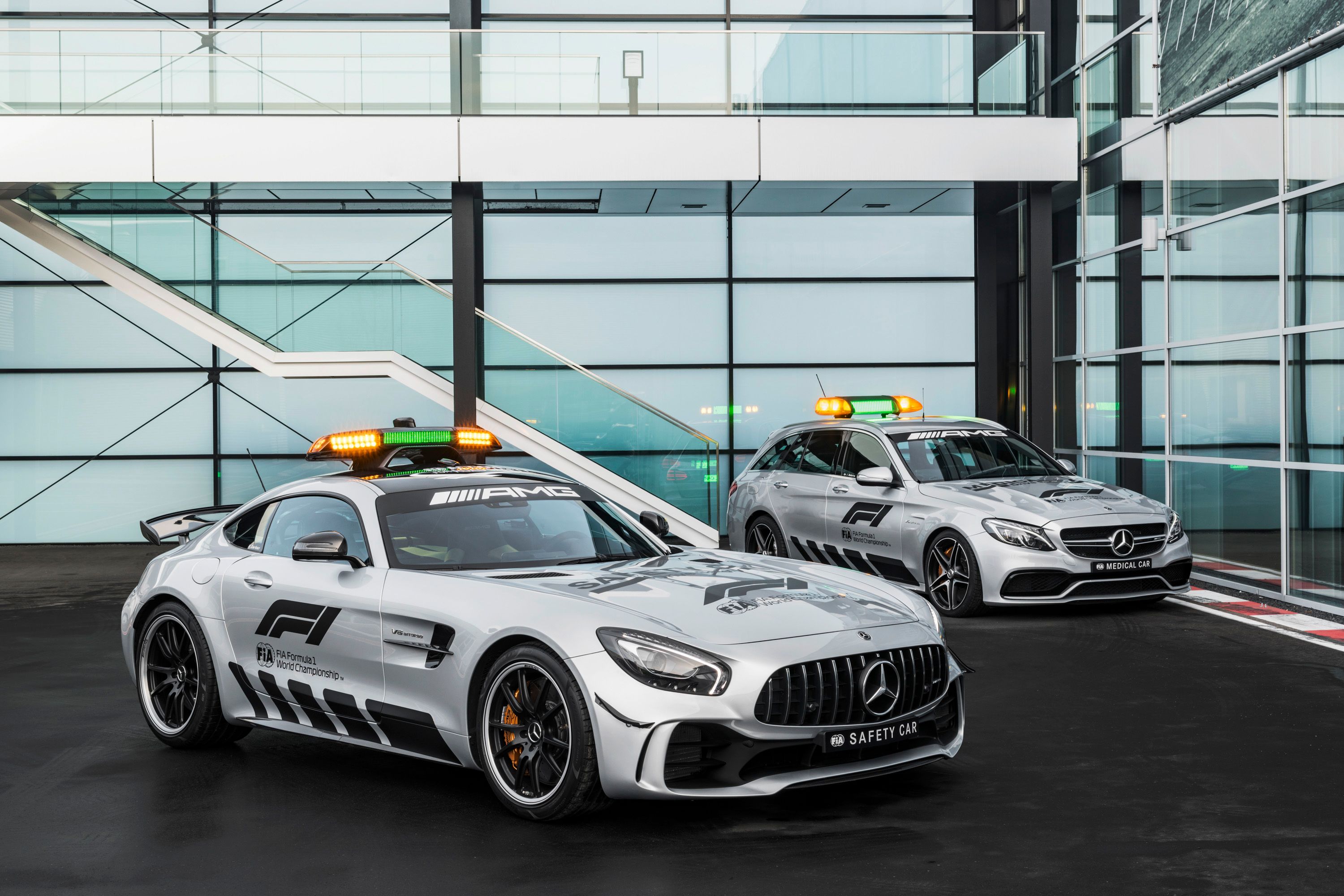

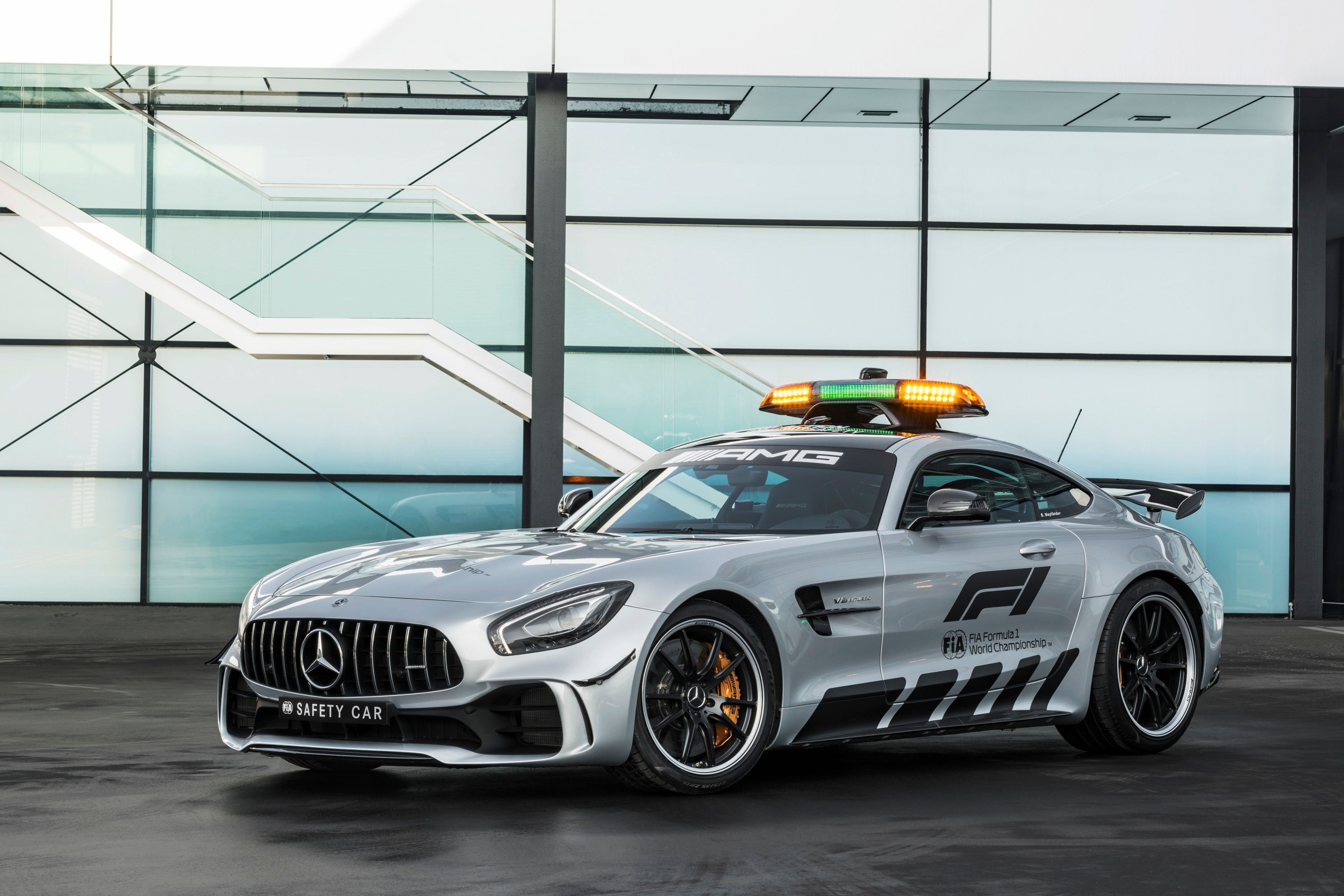
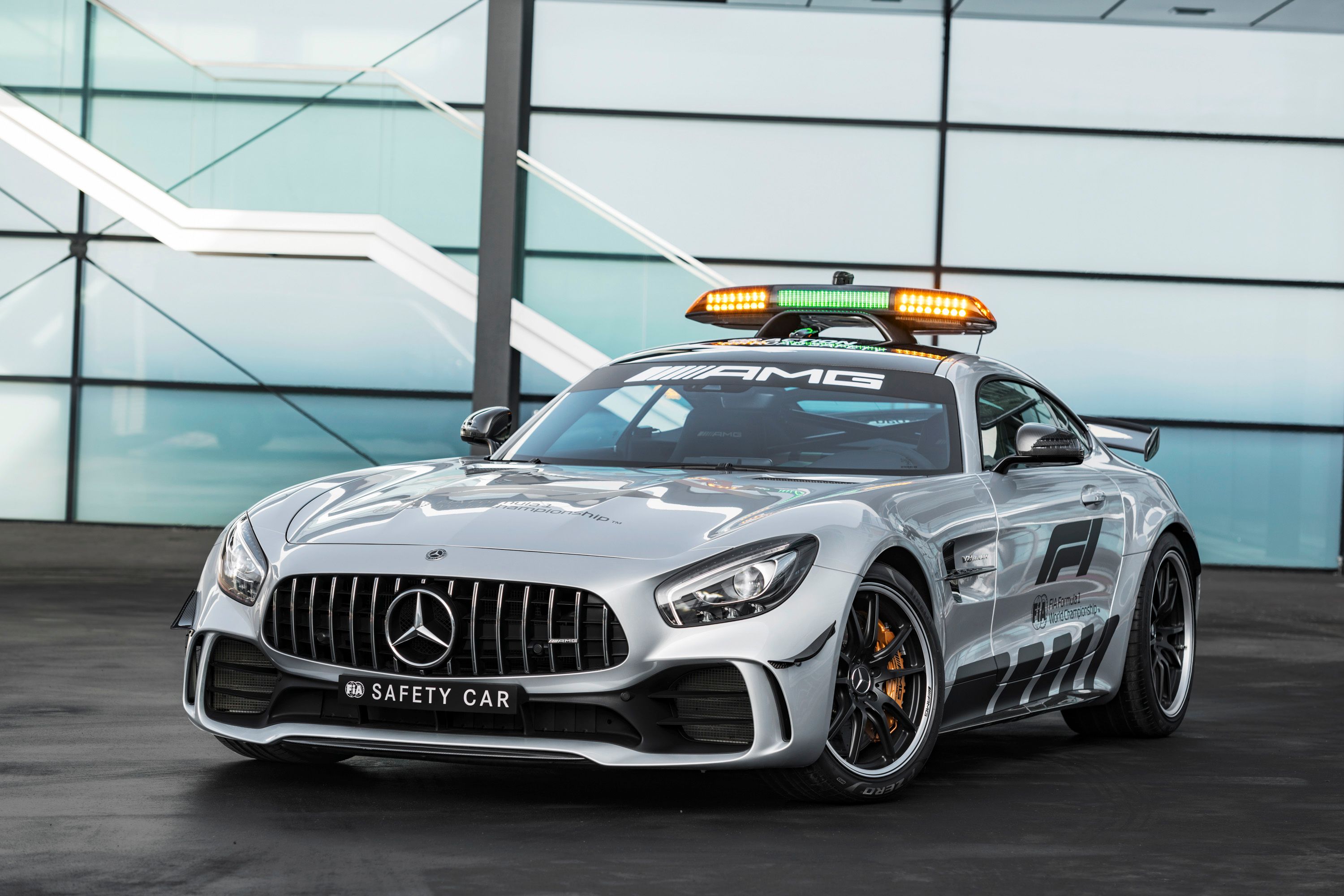
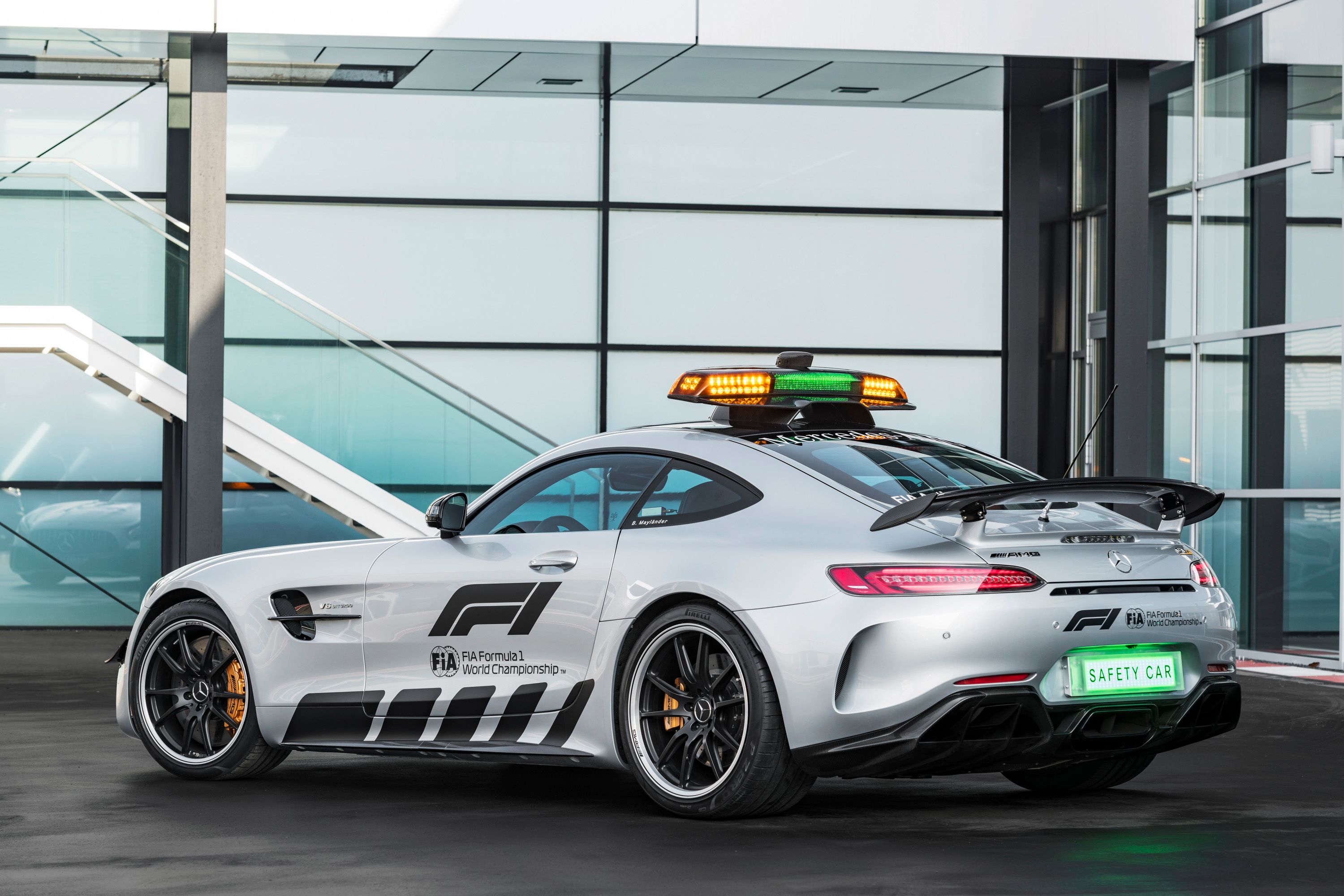
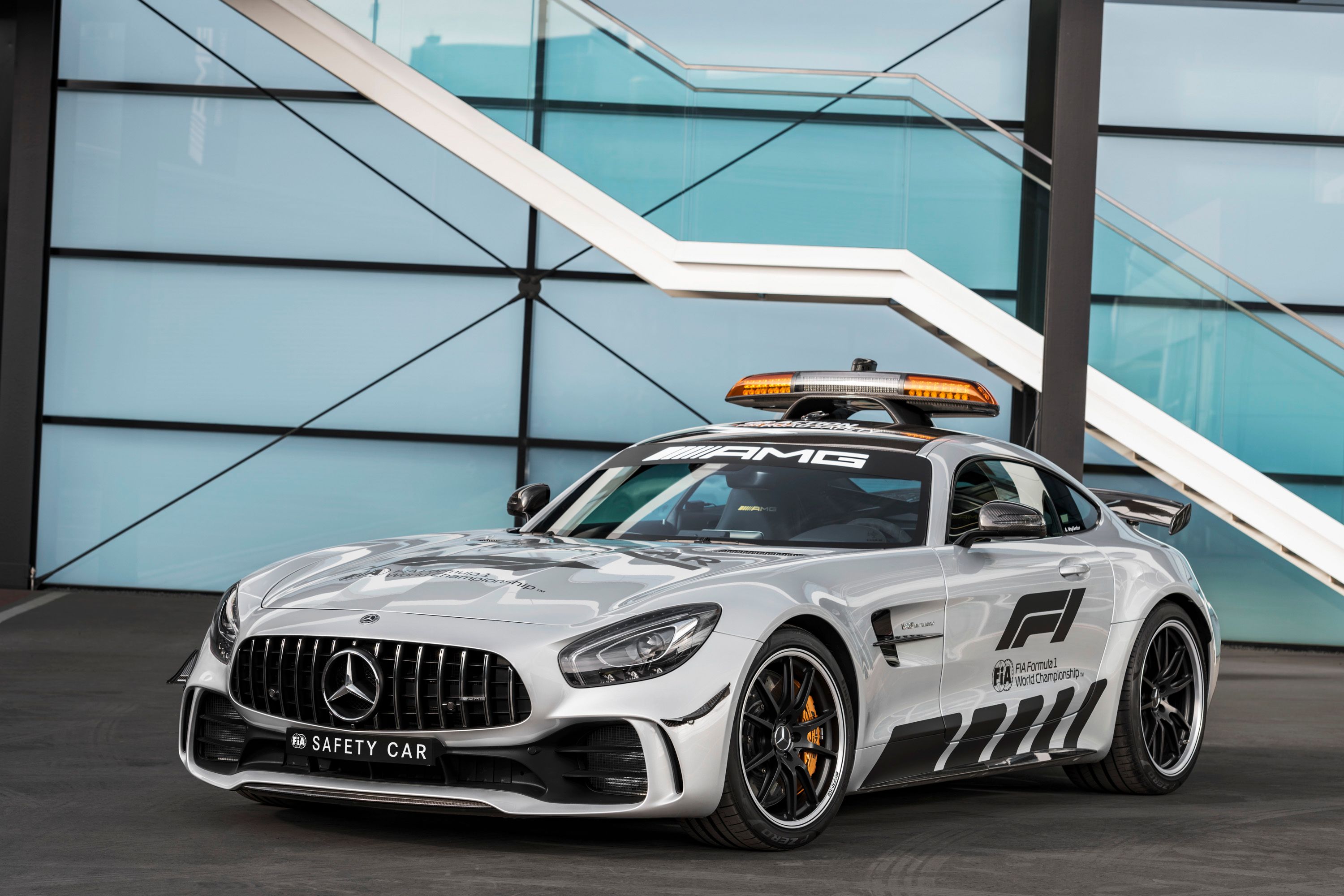
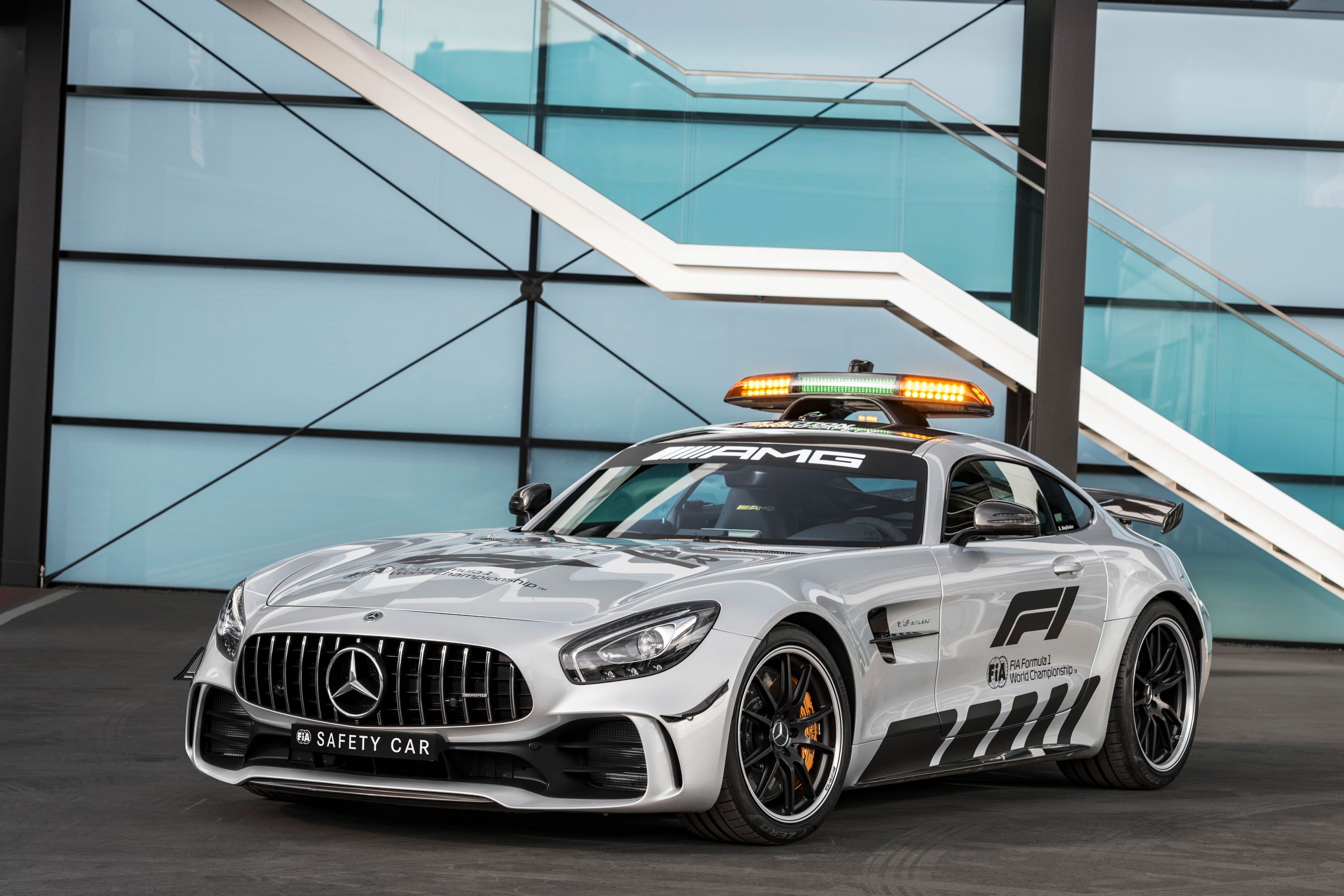
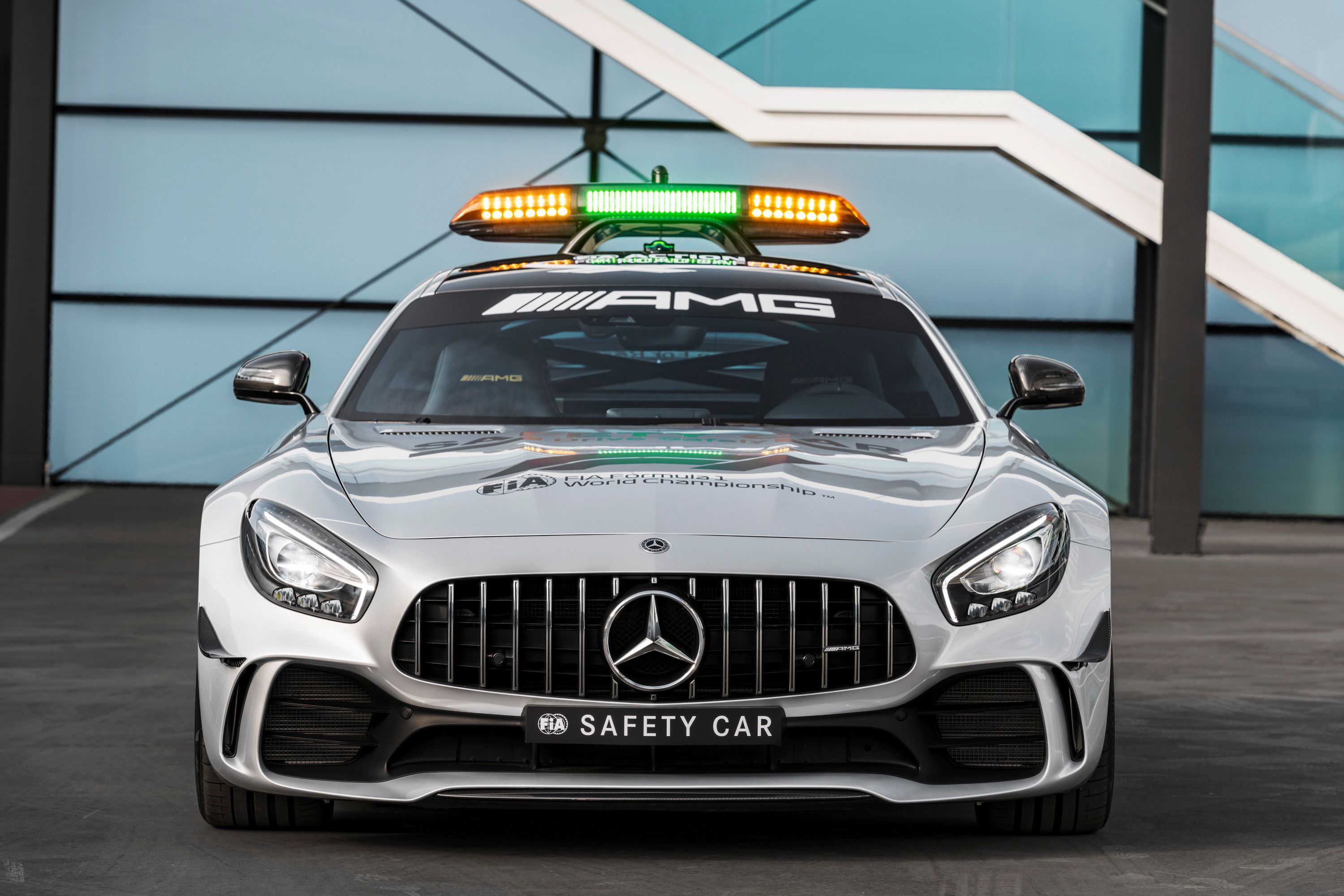
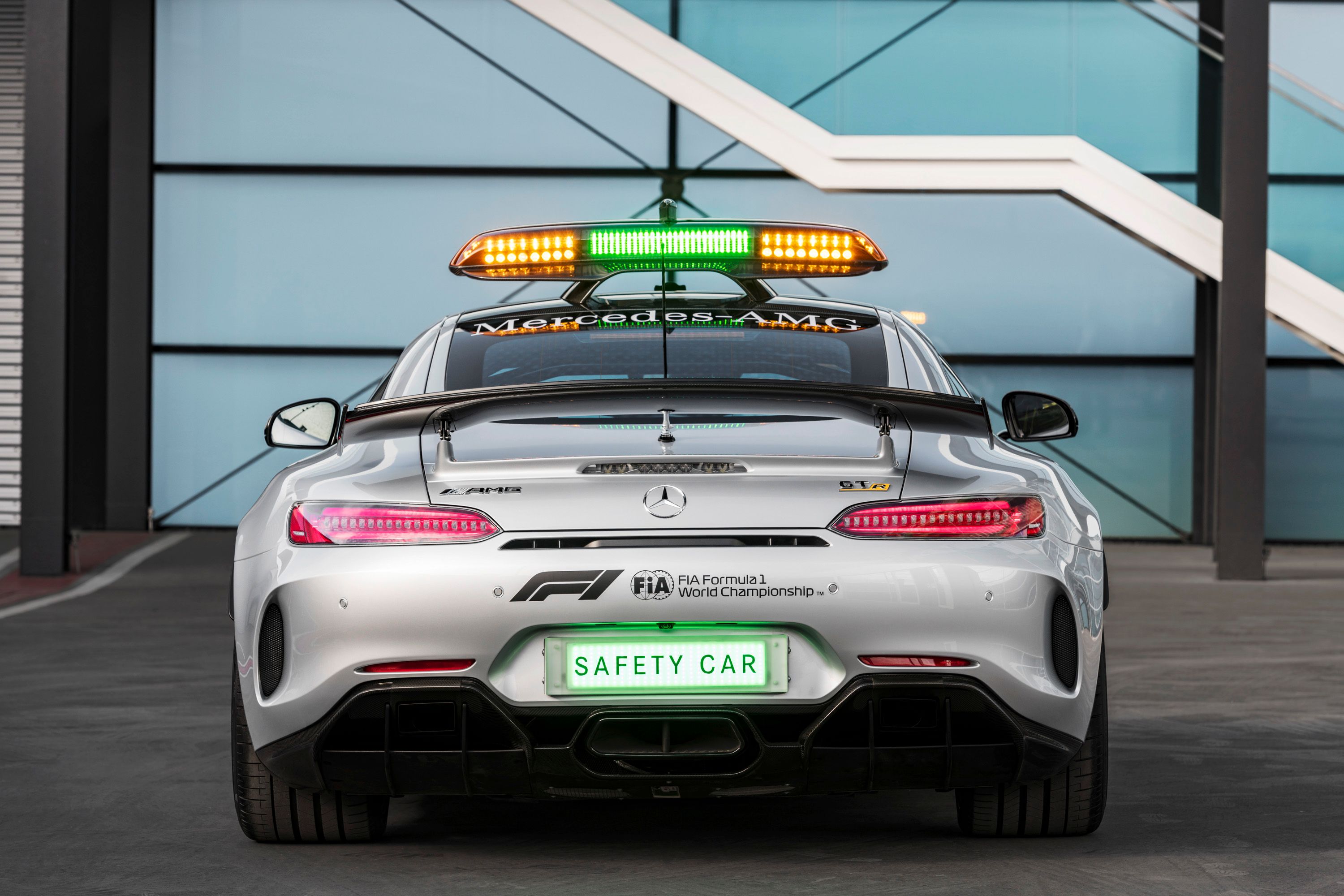
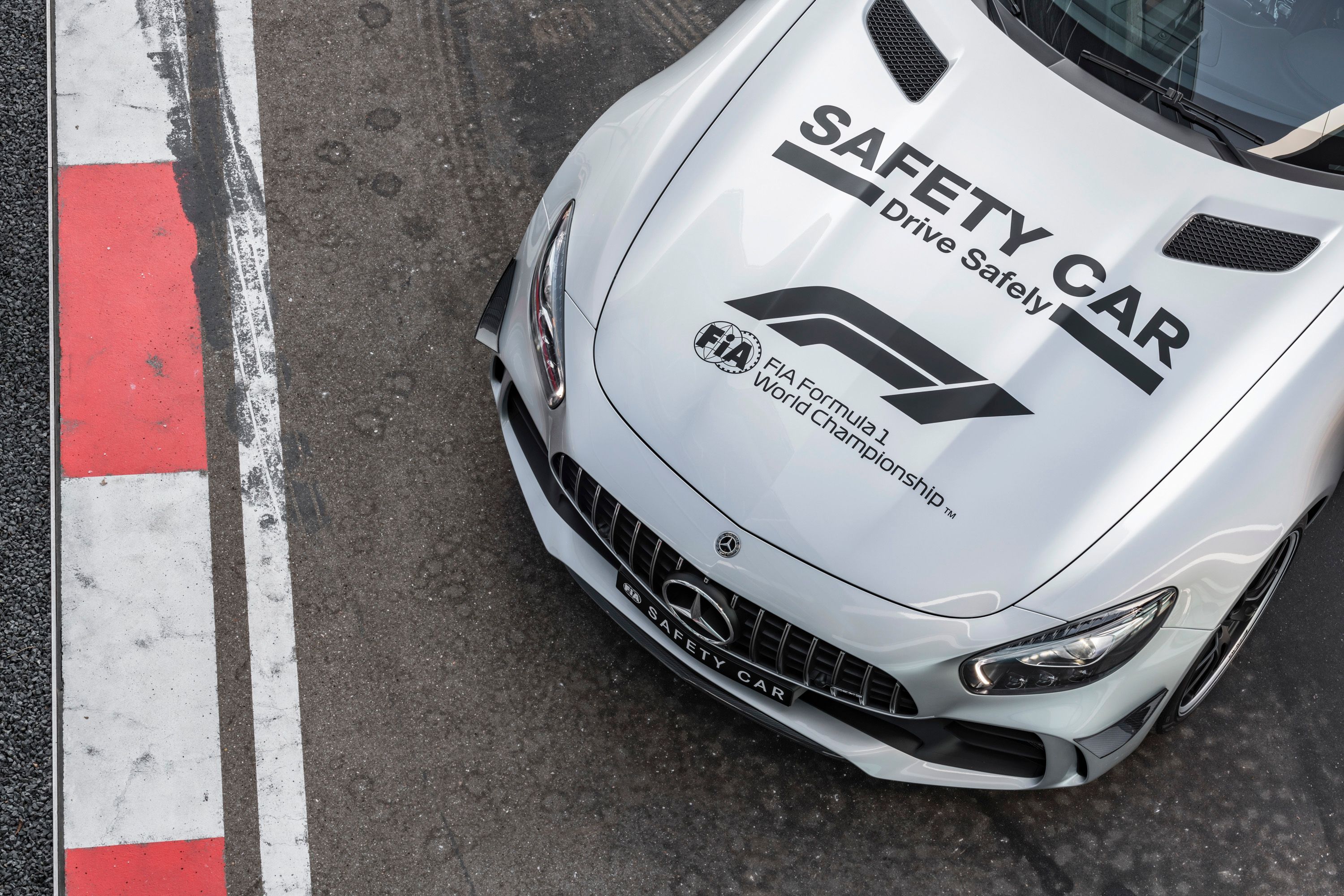
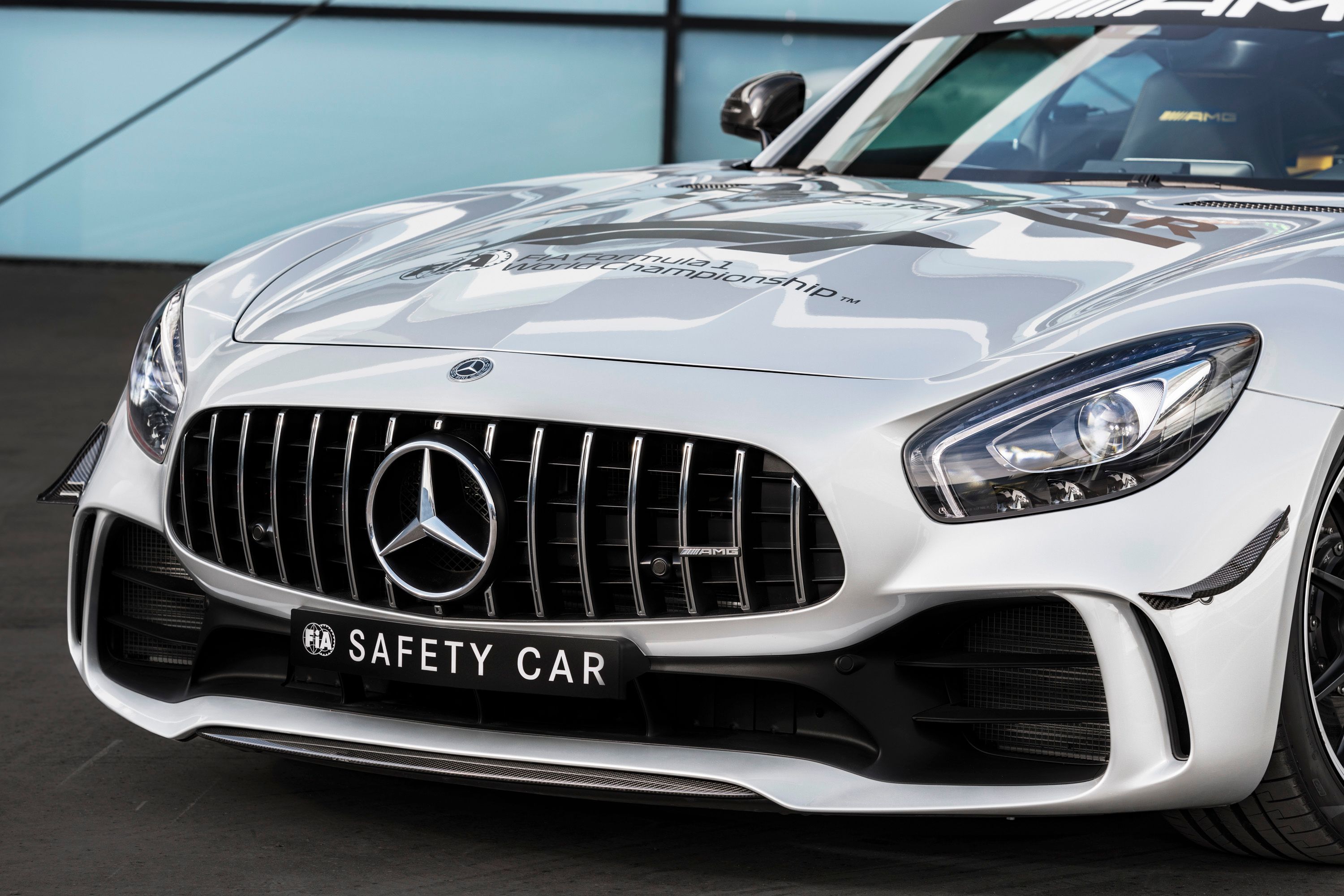
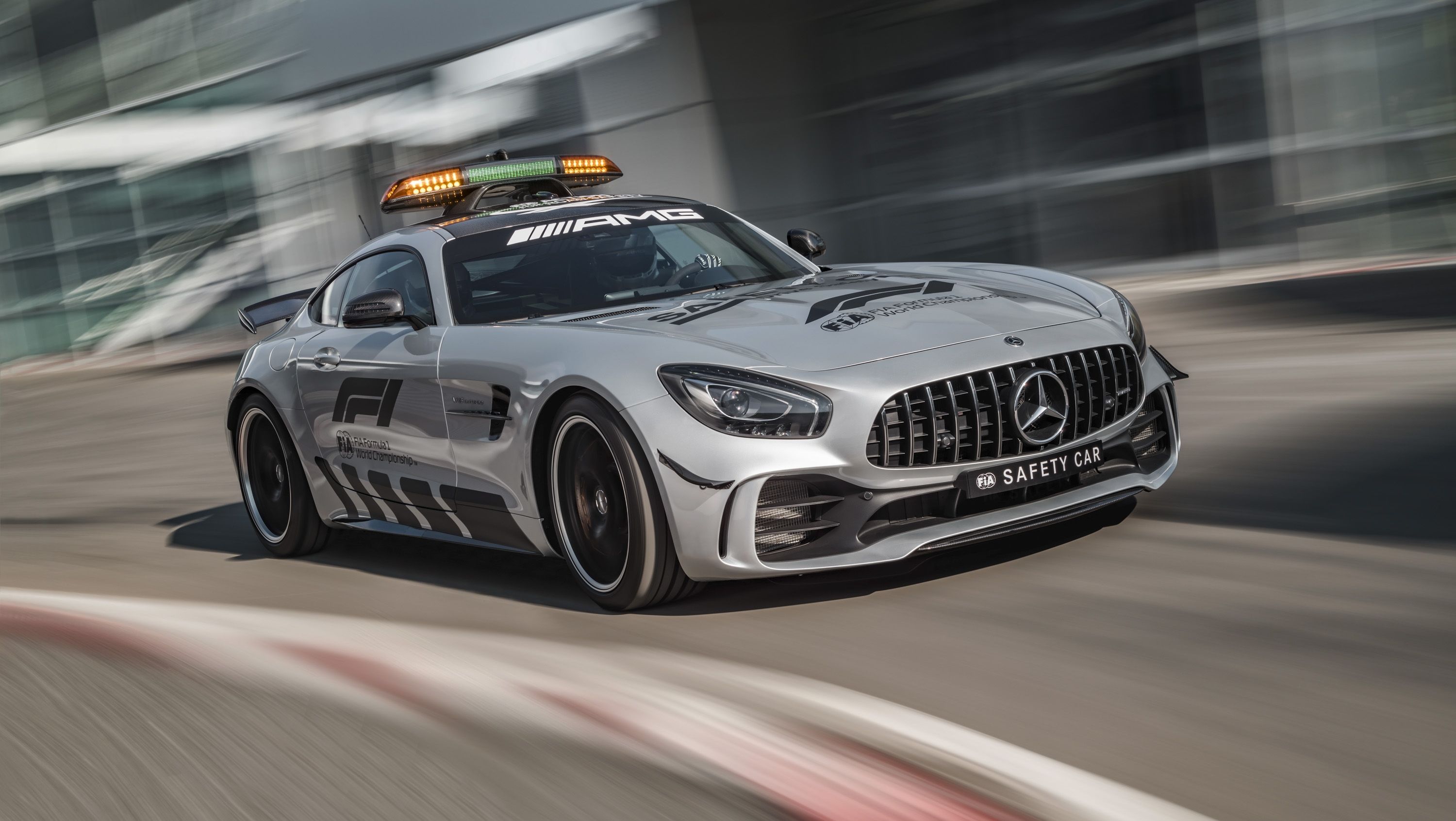
- Make: Array
- Model: 2018 Mercedes-AMG GT R Formula 1 Safety Car
- [do not use] Vehicle Model: Array
What Makes the Mercedes-AMG GT R Pace Car Different from the Road Car?

Much like any safety vehicle, the AMG GT R is almost identical to the road-going car, so it sports all the cool features seen on the most aggressive AMG GT model ever built so far. But there are a few extra features that set it apart, the most noticeable of them being the light bar on the roof. Mounted on a carbon-fiber air scoop that was designed to offer the least possible air resistance while providing optimized flow of the air toward the rear aerofoil, the light bar rises above the roof by a few inches and includes orange lights on the sides and a display made of green lights in the center. Both the air scoop and the light bar were created following extensive testing in the wind tunnel.
In addition to these technical features, the AMG GT R also gained the obligatory decals on the side panels and the engine hood. The coupe now sports "FIA" and "Formula One" graphics on the doors and engine hood, as well as black vertical stripes on the side skirts and lower doors. "Safety Car" license plates were added front and rear, with the latter being illuminated in green.

The cabin gained a few modifications as well, starting with a revised roll cage, an FIA-spec radio, and two iPads. The latter are used by the co-driver to maintain radio contact with race control and to monitor the Formula 1 cars. The display of the left one shows the international TV broadcast, while the one on the right can feature either an animated display of the current position of the vehicles or show current lap times. Data management is handled by an InCar Hotspot system with a WLAN wireless network.
The Safety Car is powered by the standard AMG GT R drivetrain, which cranks out a whopping 577 horsepower and 520 pound-feet of torque. Not only the most powerful F1 safety car ever, but it's also the quickest of its kind, needing only 3.6 seconds to hit 62 mph from a standing start. On top of the standard engine and automatic transmission, the Safety Car also features the AMG Track Package, which includes a roll-over protection system and the ceramic high-performance compound braking system. The latter lowers the coupe's curb weight and provide a longer service life, as well as better fade resistance.
References
Read our full review on the 2018 Mercedes-AMG GT R.
Read more Mercedes-Benz news.

